- Nature / Scenery
- Gourmet
- Hot Springs
No.f_0030
A Rail Journey Linking Landscapes: From Kinosaki Onsen to Kyoto by the Sea
Hyogo Prefecture is famed for its scenic rail journeys. Among them, one of the most popular is the Tango AO-MATSU Train, which lets travelers explore both Hyogo and Kyoto while staying in the historic hot-spring town of Kinosaki Onsen. The journey begins in Kinosaki Onsen, about two and a half hours from Kobe, Osaka, or Kyoto by limited express train—a trip that connects hot springs, fine sake, and breathtaking views of the Sea of Japan.
The Journey Begins in Kinosaki Onsen, the Pride of Hyogo’s Hot Springs
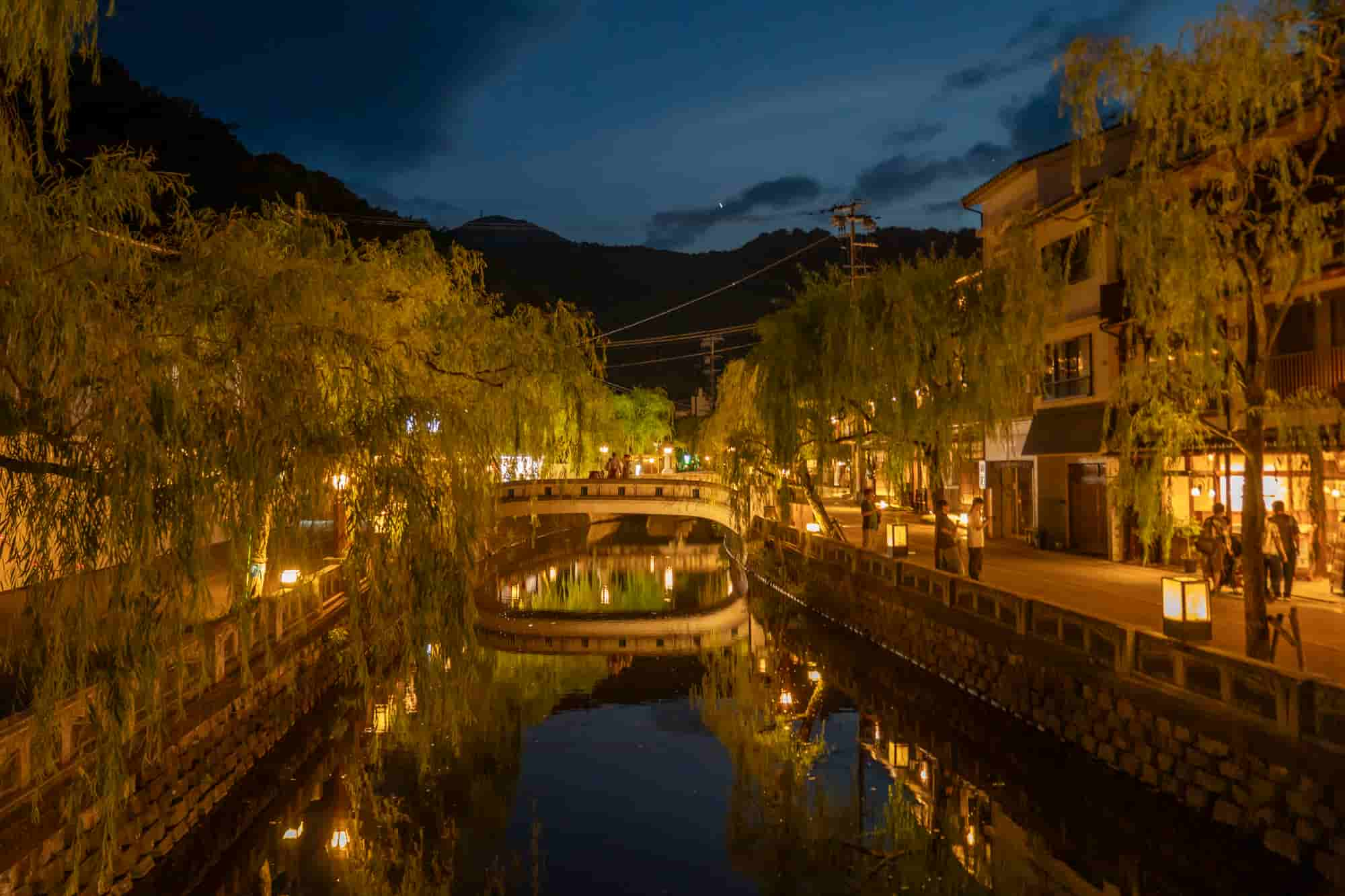 The hot-spring town of Kinosaki Onsen stretches along the willow-lined Otani River.
The hot-spring town of Kinosaki Onsen stretches along the willow-lined Otani River.
With a history spanning 1,300 years, Kinosaki Onsen has long been beloved by writers and artists, including the novelist Naoya Shiga. The willow-lined Otani River, crossed by graceful taiko (“drum”) bridges, creates an enchanting scene that turns dreamlike at dusk, inviting visitors into another world. Kinosaki Onsen is unique in Japan for the philosophy that “the station is the entrance, the streets are the corridors, the inns are the guest rooms, and the public baths are the grand bath.” The entire town is viewed as a single ryokan guesthouse, encouraging visitors to stroll between inns, dine outside, and enjoy the seven public baths. Equally remarkable, every inn and bath here is tattoo-friendly, reflecting the town’s spirit of openness.
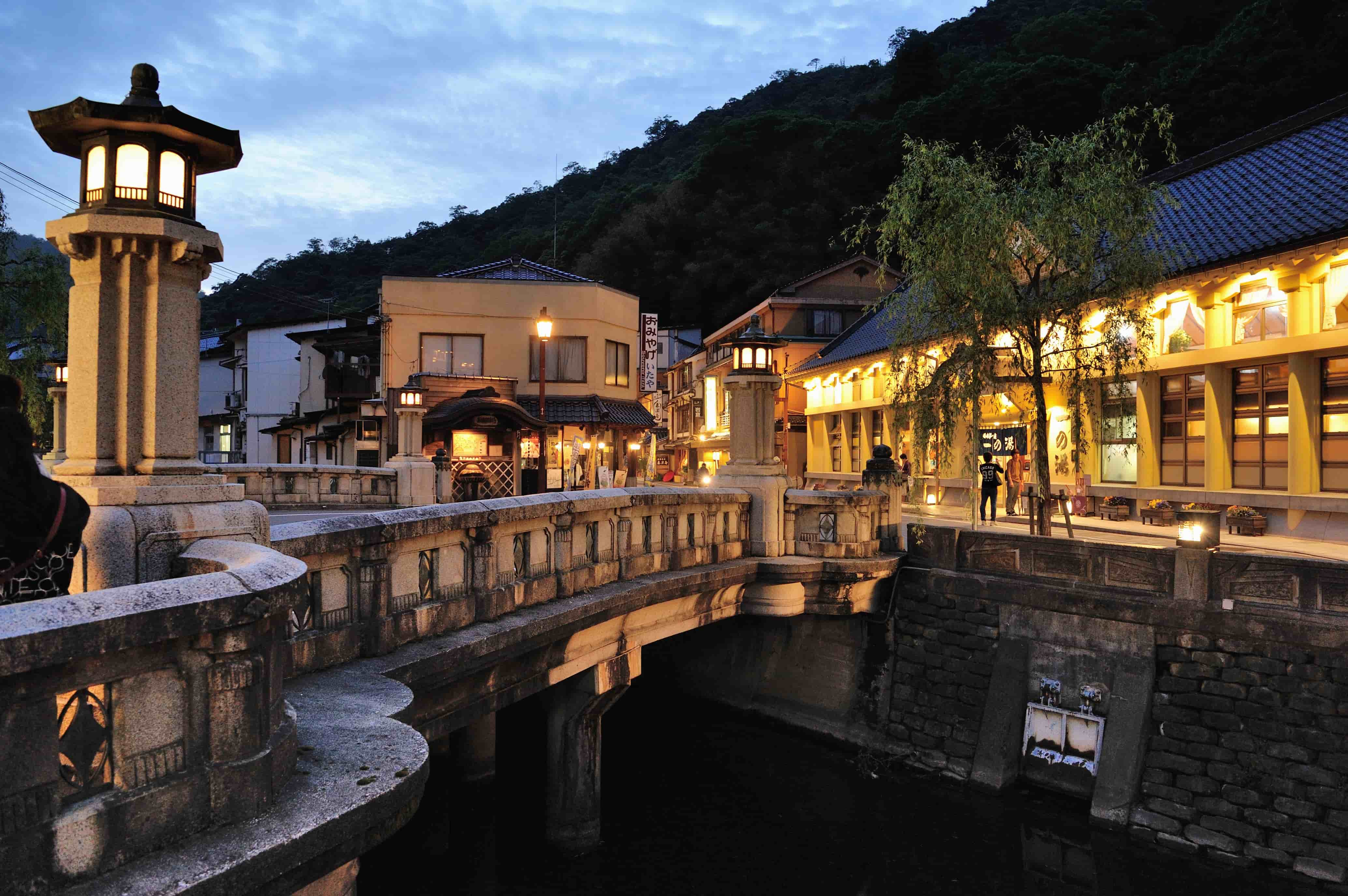 Ichinoyu, viewed from Ohashi Bridge. Its kabuki-theater-style façade is striking.
Ichinoyu, viewed from Ohashi Bridge. Its kabuki-theater-style façade is striking.
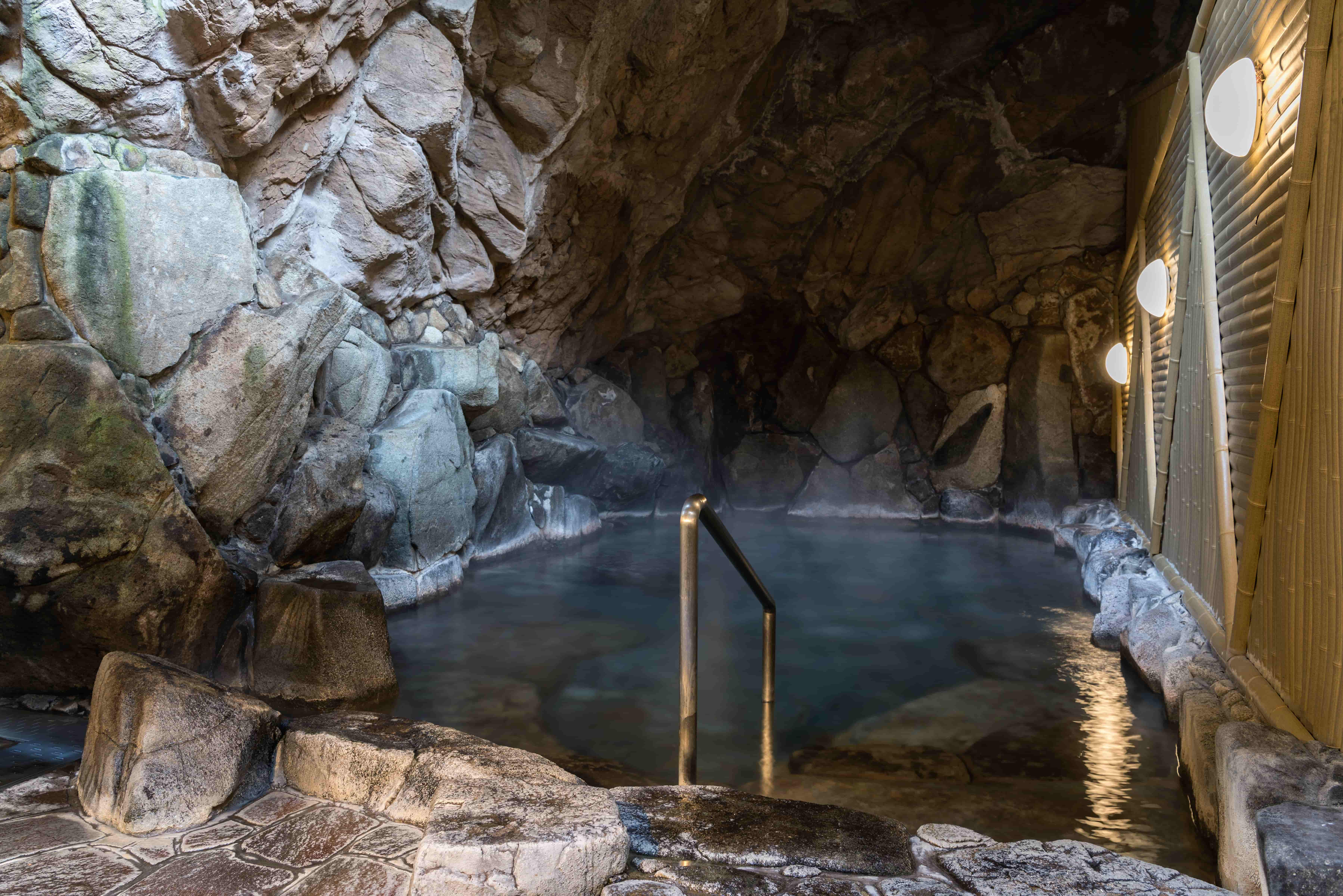 Ichinoyu’s cave bath, carved from natural rock.
Ichinoyu’s cave bath, carved from natural rock.
Among the seven public baths, Ichinoyu, located at the heart of town, is a true symbol of Kinosaki. During the mid-Edo period it was known as Arayu (“New Bath”), but was renamed Ichinoyu (“Number One Bath”) after the renowned physician Kagawa Shutoku praised it, saying “Kinosaki’s new bath is the best in the land.”
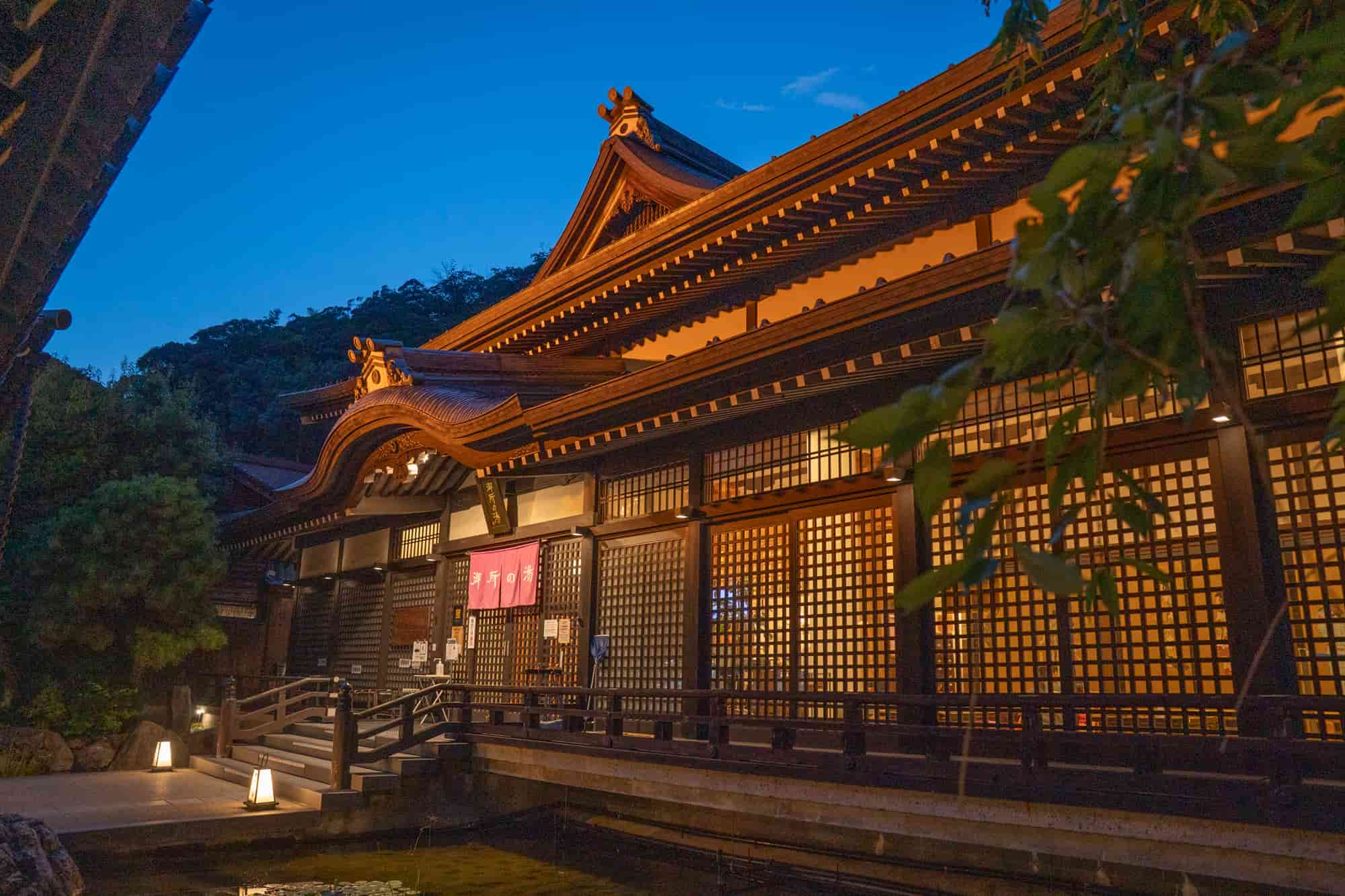 Goshonoyu, built in the majestic style of the Kyoto Imperial Palace.
Goshonoyu, built in the majestic style of the Kyoto Imperial Palace.
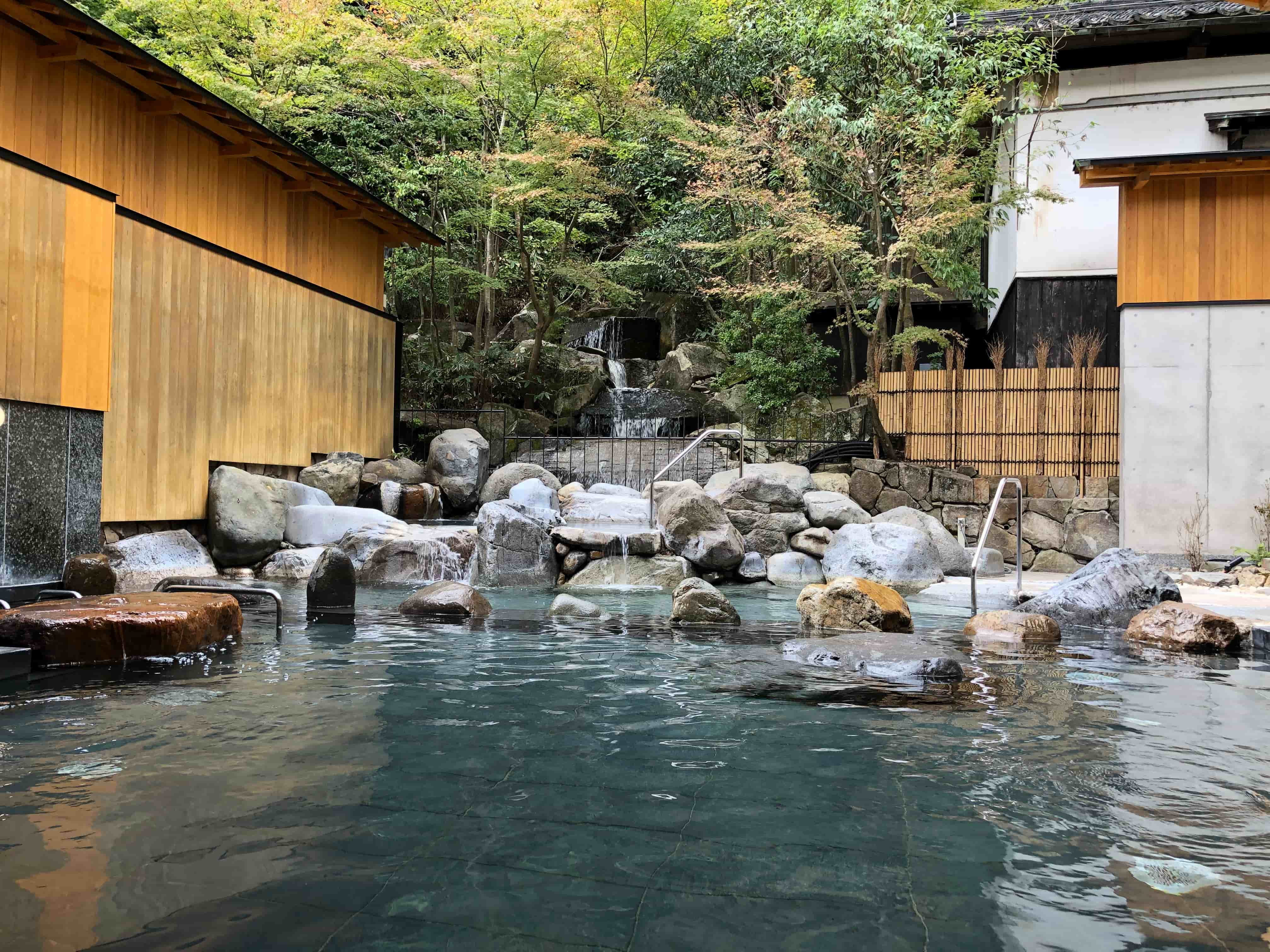 Goshonoyu, the only open-air bath among the seven public baths.
Goshonoyu, the only open-air bath among the seven public baths.
The famous Goshonoyu, known as a “bath of beauty,” attracts about 400,000 visitors annually. From its garden-style open-air bath, bathers can gaze out over lush green hills and a cascading waterfall—an experience of pure relaxation. For day visitors, a one-day pass (1,500 yen for adults, 750 yen for children) grants unlimited entry to all seven public baths (except Satonoyu, which is currently closed). Tickets can be purchased at the reception of any of the baths.
BOOK YOUR STAY IN KINOSAKI
Strolling the Town and Making Your Own Hot Spring Eggs
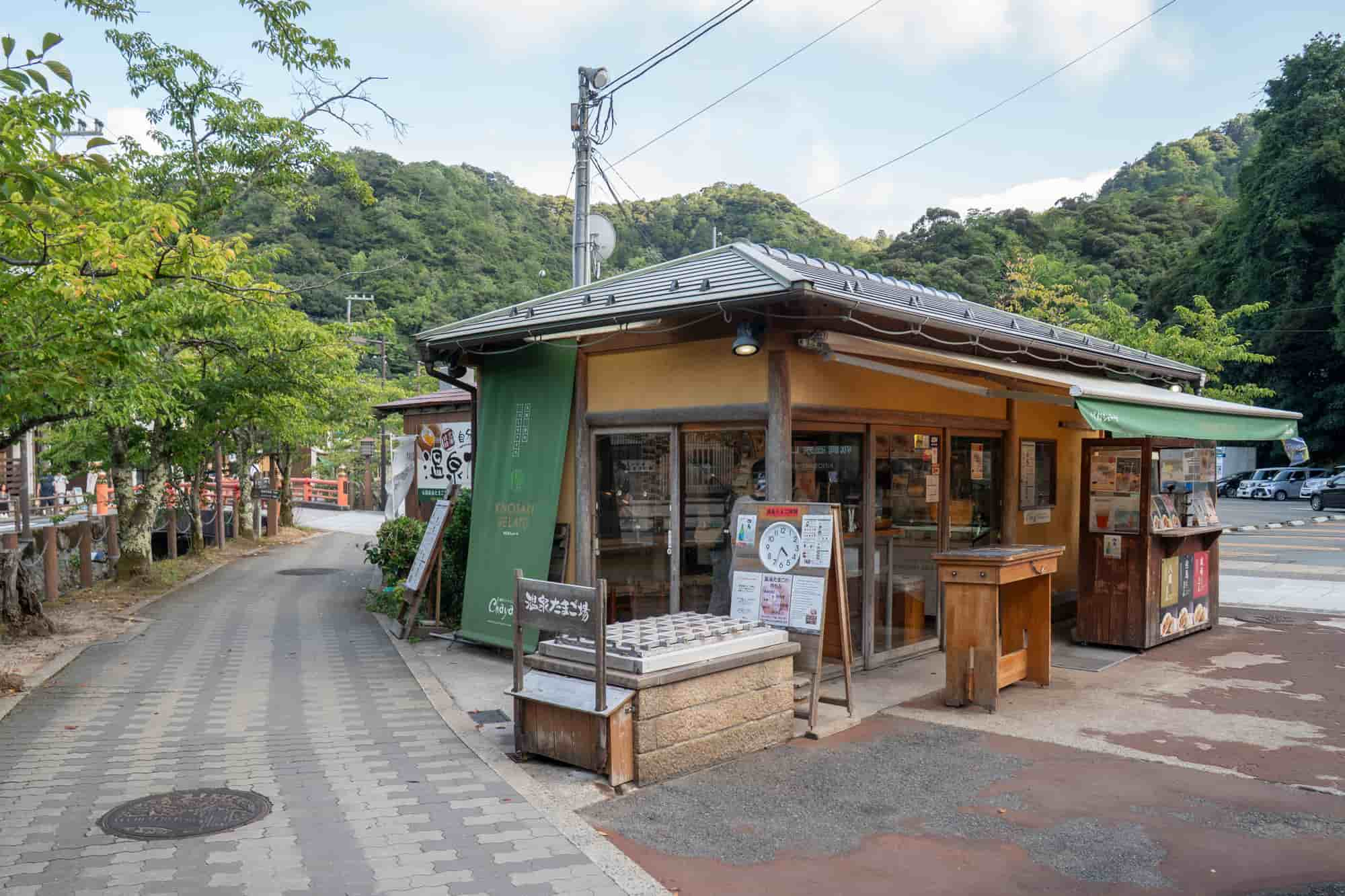 Kinosaki Gelato Café Chaya, near the original Kinosaki hot spring source.
Kinosaki Gelato Café Chaya, near the original Kinosaki hot spring source.
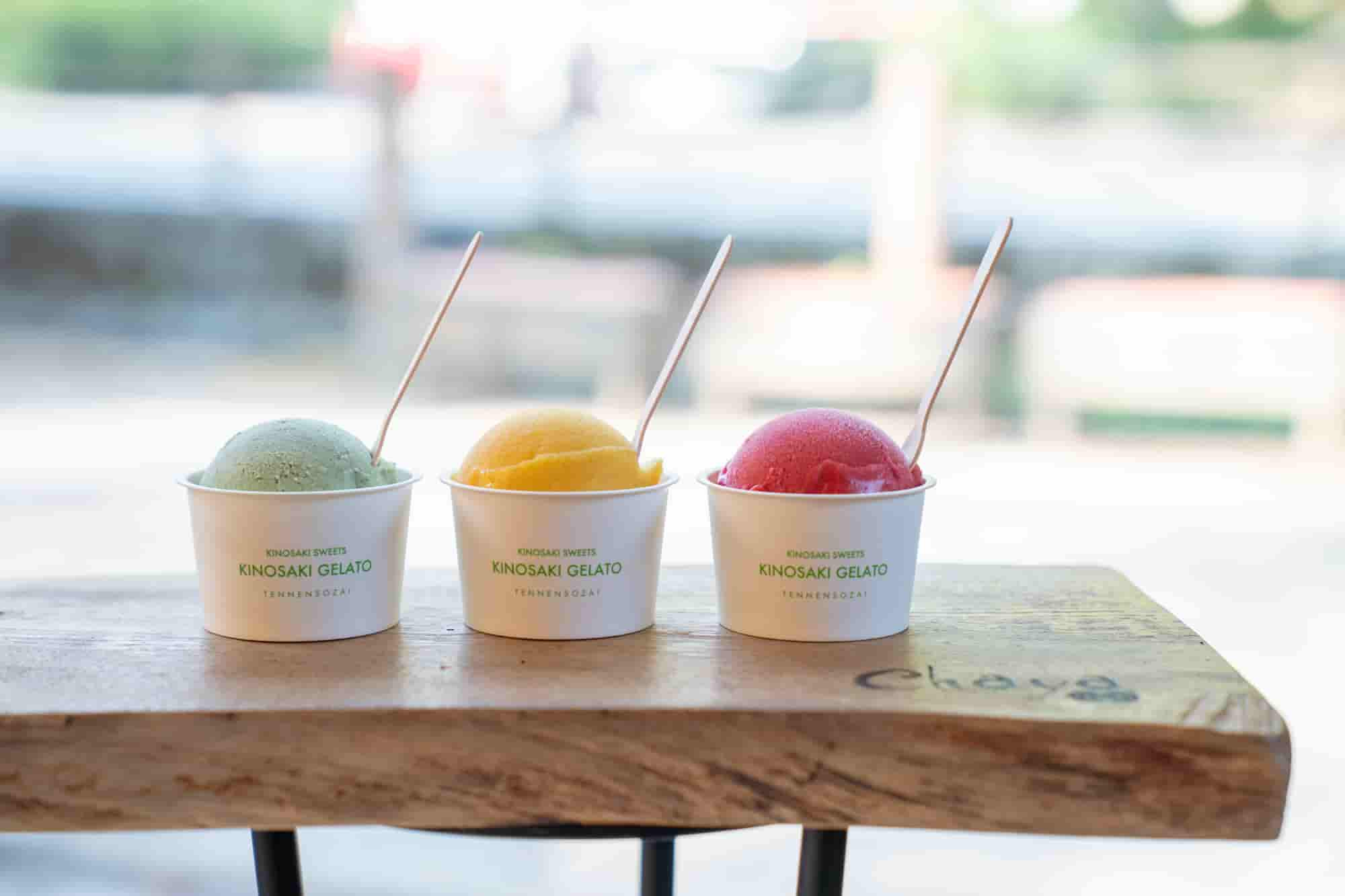 Kinosaki Gelato, from 400 yen. From left: Black Soybean & Mugwort, Mango, and Raspberry.
Kinosaki Gelato, from 400 yen. From left: Black Soybean & Mugwort, Mango, and Raspberry.
In addition to bath-hopping, Kinosaki Onsen is also perfect for sampling local treats.
Located in Yakushi Pocket Park, Kinosaki Gelato Café Chaya is a popular spot offering gelato made with natural ingredients and savory items such as Tajima beef buns.
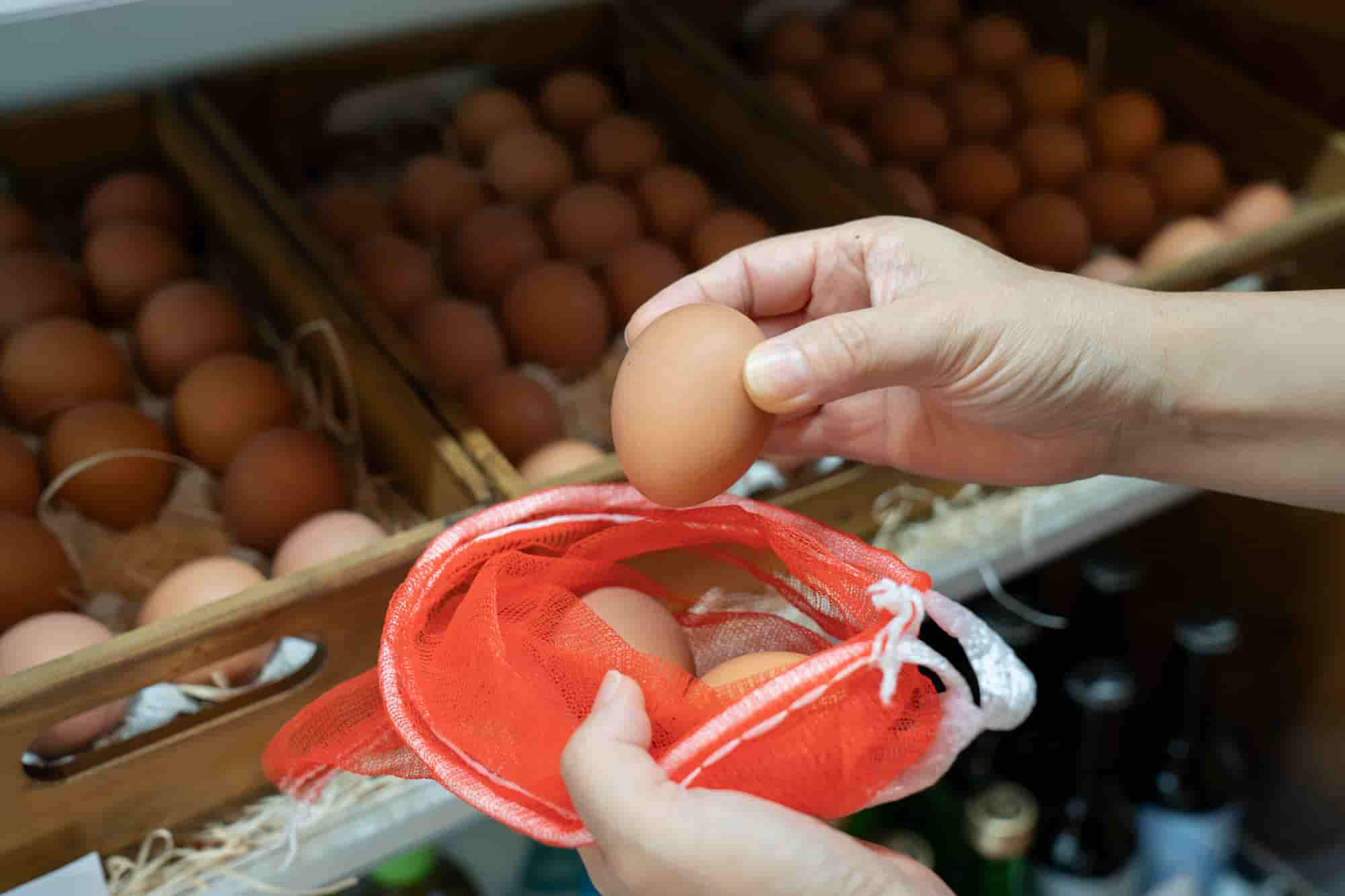 The hot spring egg experience costs 300 yen; eggs are 50 yen each and can be chosen freely from the shelf.
The hot spring egg experience costs 300 yen; eggs are 50 yen each and can be chosen freely from the shelf.
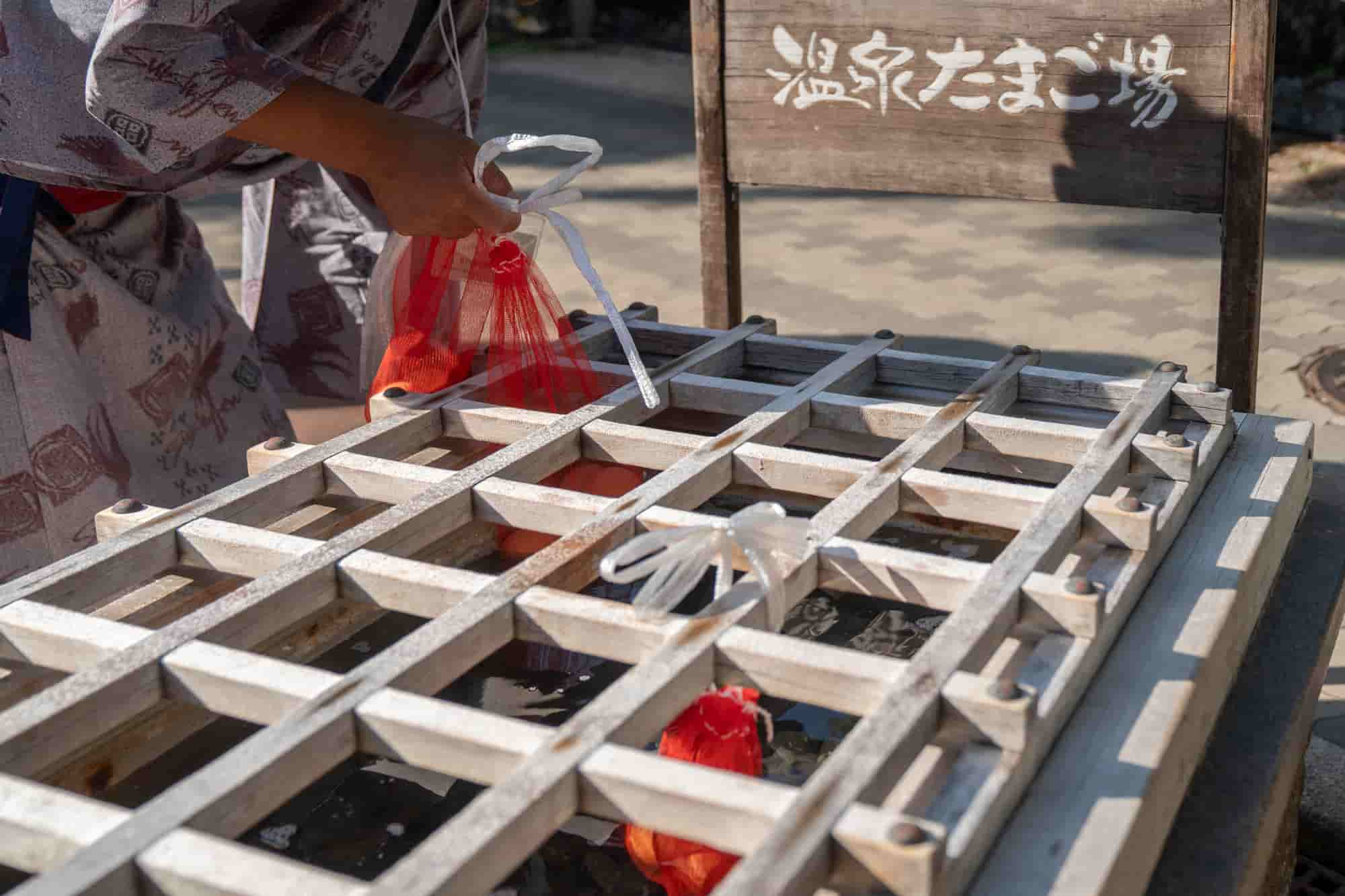 The hot spring egg site, where the Kinosaki Onsen source flows.
The hot spring egg site, where the Kinosaki Onsen source flows.
Within the park, the original hot spring source flows directly from the ground, and visitors can experience making their own hot spring eggs. After purchasing fresh eggs inside the café, head outdoors to the steaming spring. Place your egg-filled net into the hot spring water, and in about nine minutes, your perfectly cooked onsen egg will be ready.
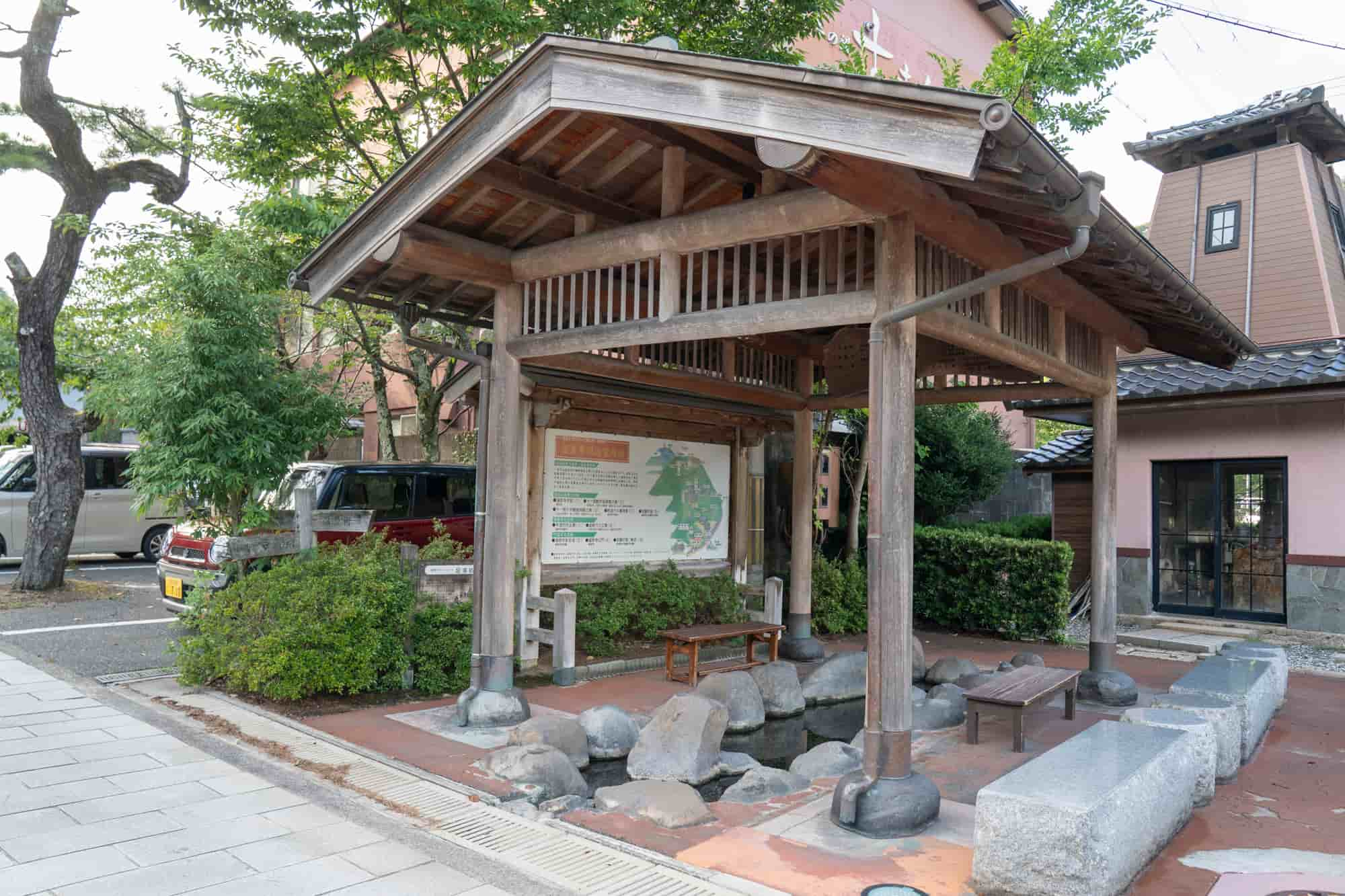 A foot bath fed by the Kinosaki Onsen hot spring source.
A foot bath fed by the Kinosaki Onsen hot spring source.
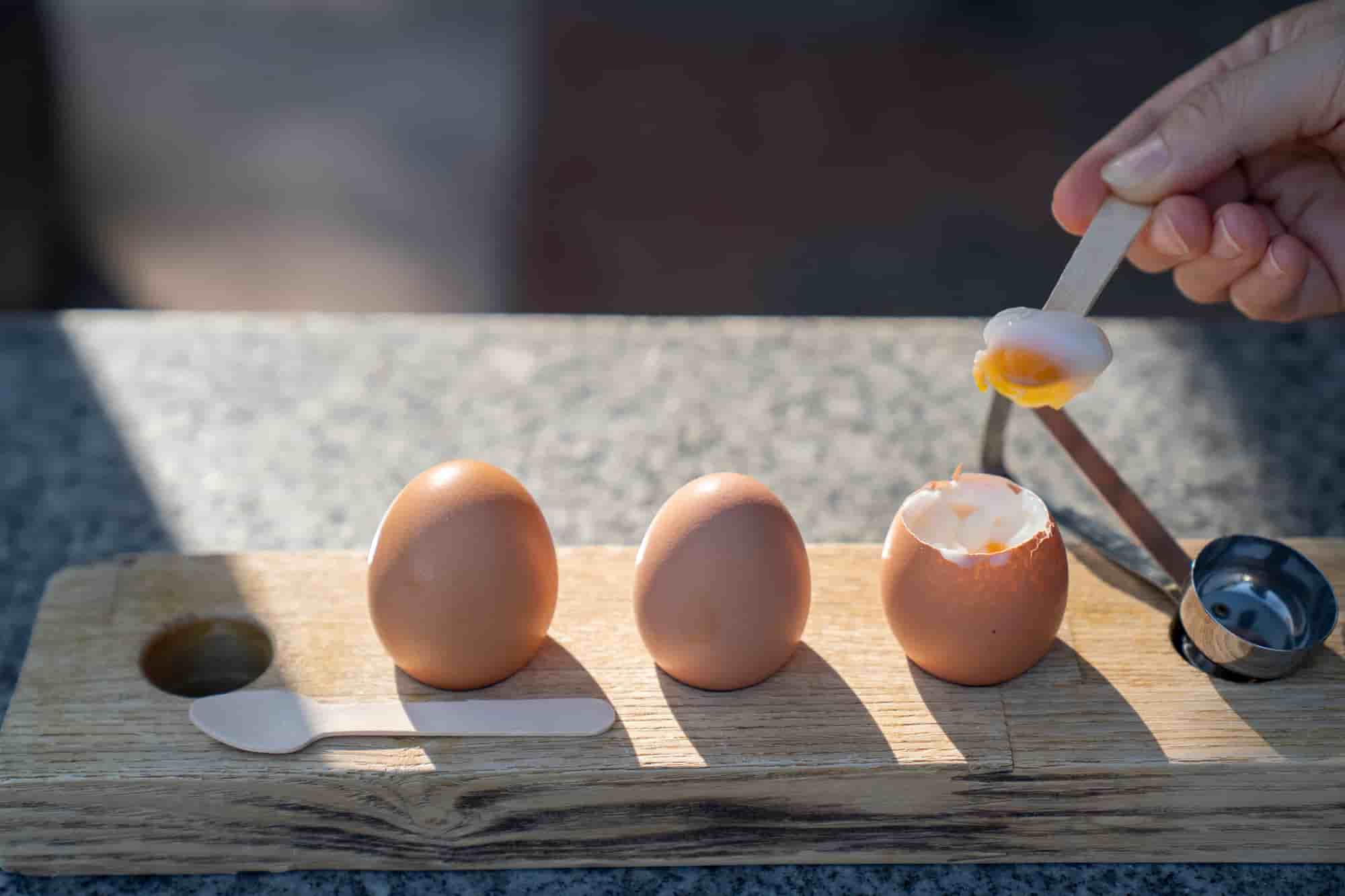 Use an egg cutter to gently remove the top, and enjoy the egg with a spoon.
Use an egg cutter to gently remove the top, and enjoy the egg with a spoon.
While you wait, relax in the foot bath at the front of the shop. By the time your feet are gently warmed, your egg will be done. Heated slowly in 65–70°C spring water, the yolk turns soft and creamy while the white takes on a silky, custard-like texture—an indulgence unlike any regular boiled egg.
Savor Craft Beer After a Soothing Bath
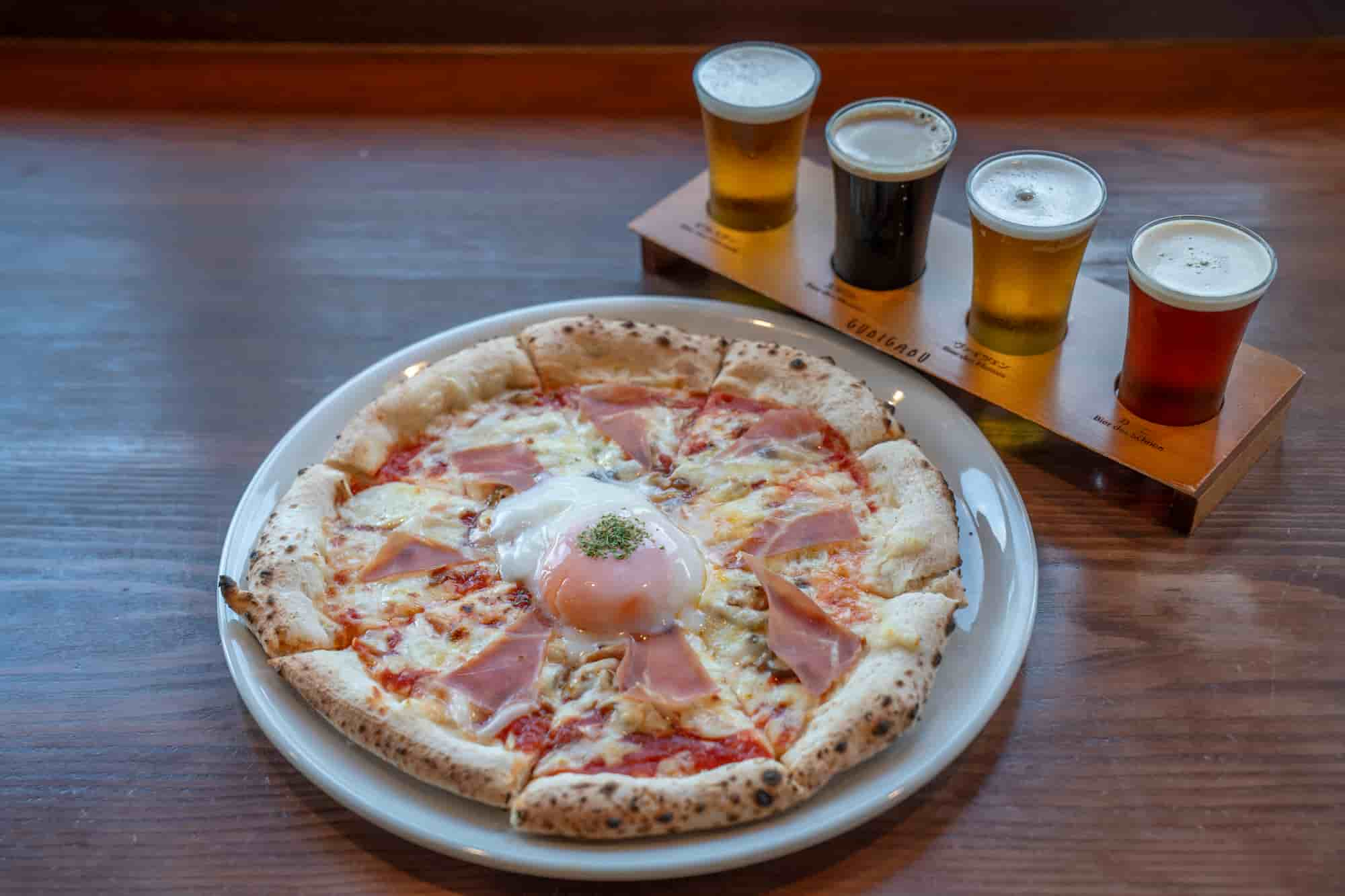 Bismarck pizza with hot spring egg, 1,890 yen / Craft beer tasting set of four, 1,280 yen.
Bismarck pizza with hot spring egg, 1,890 yen / Craft beer tasting set of four, 1,280 yen.
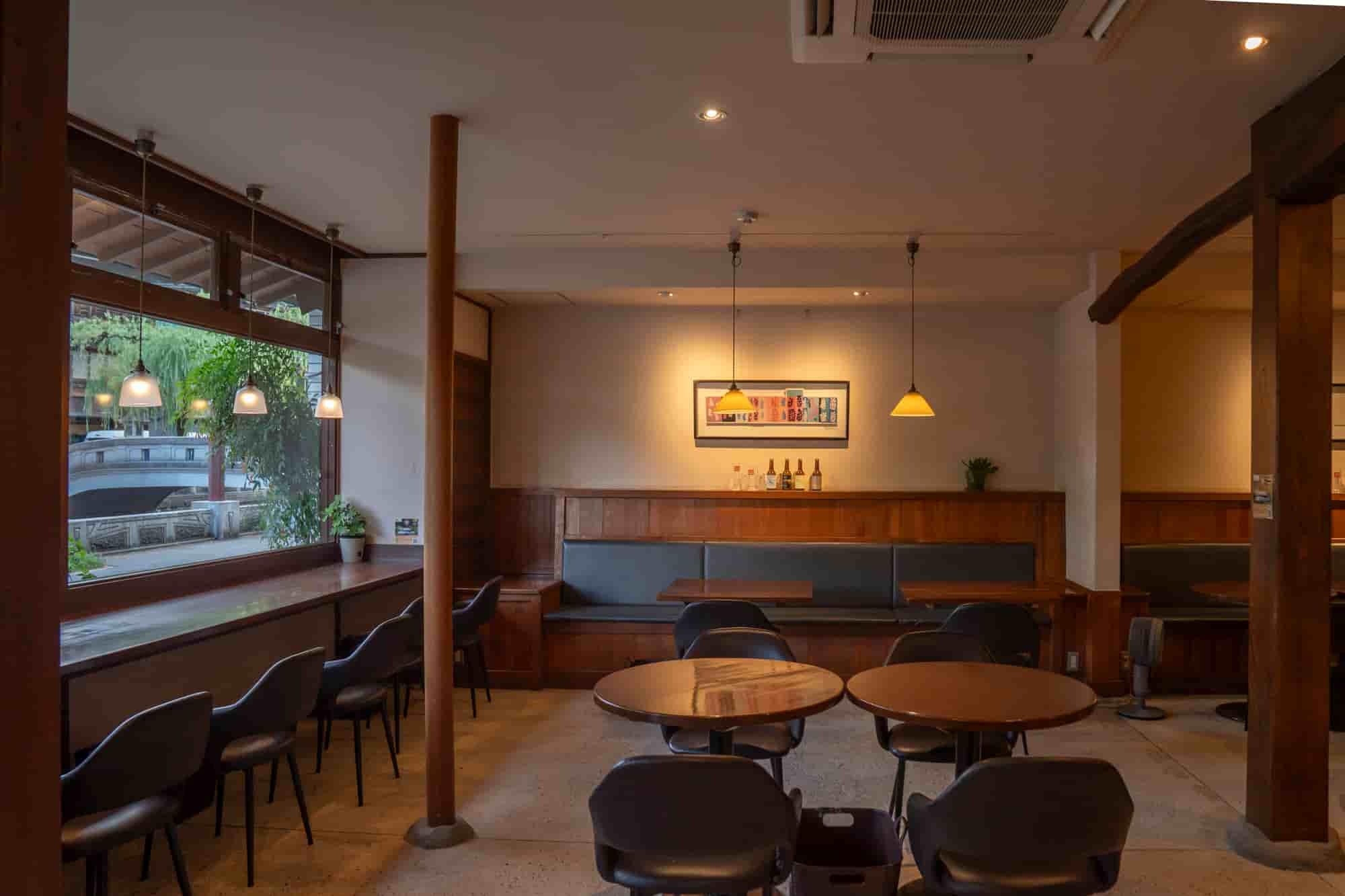 Counter seats overlooking the townscape of Kinosaki Onsen are especially popular.
Counter seats overlooking the townscape of Kinosaki Onsen are especially popular.
A perfect stop after touring the public baths is GUBIGABU, a local craft beer restaurant located along Kinosaki Onsen’s main street. The casual, relaxed atmosphere welcomes visitors in their yukata right after a bath. From the counter seats, guests can enjoy a pint while gazing out over the nostalgic streetscape of the hot-spring town.
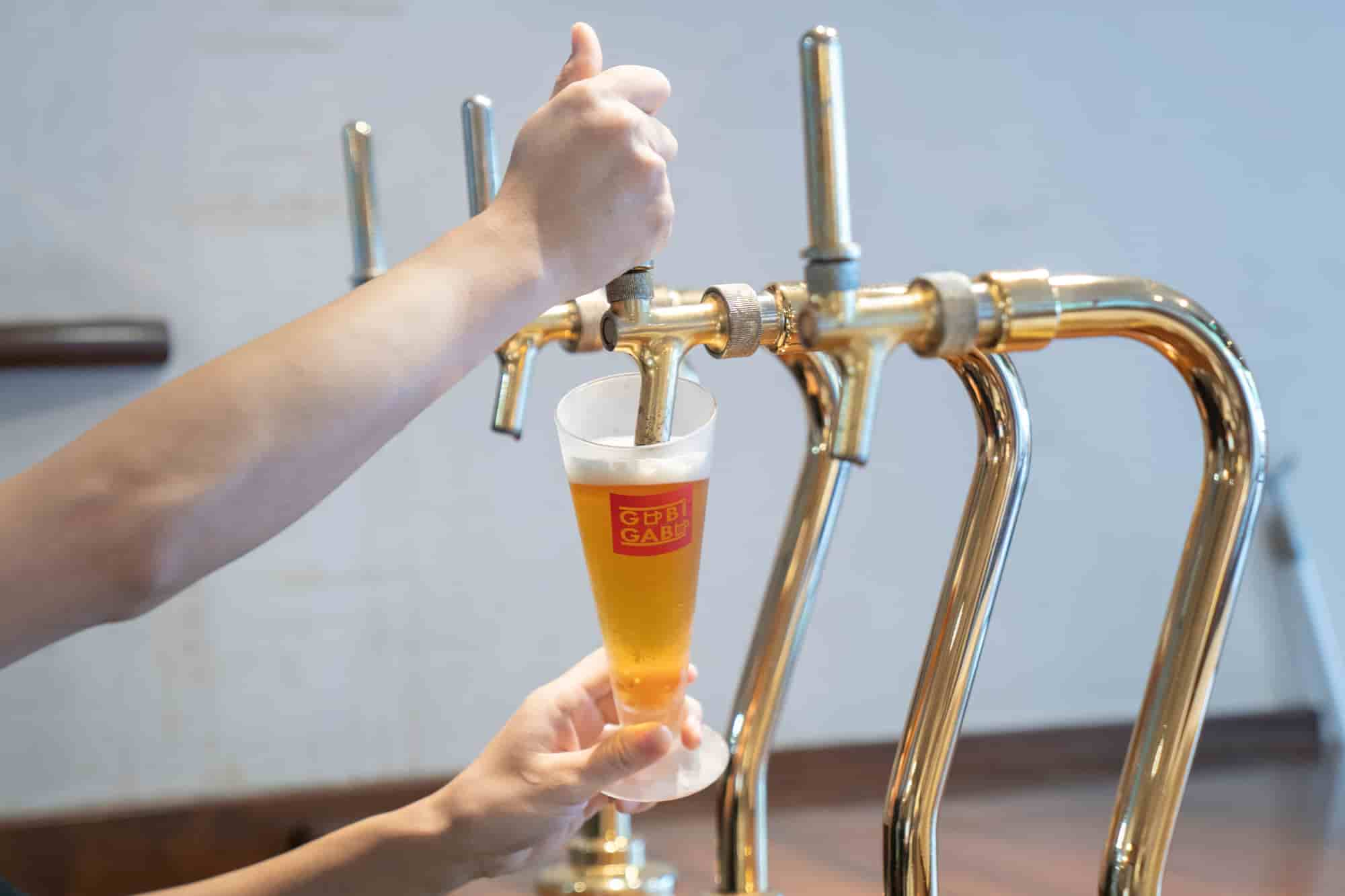 Four varieties of craft beer are served fresh on tap.
Four varieties of craft beer are served fresh on tap.
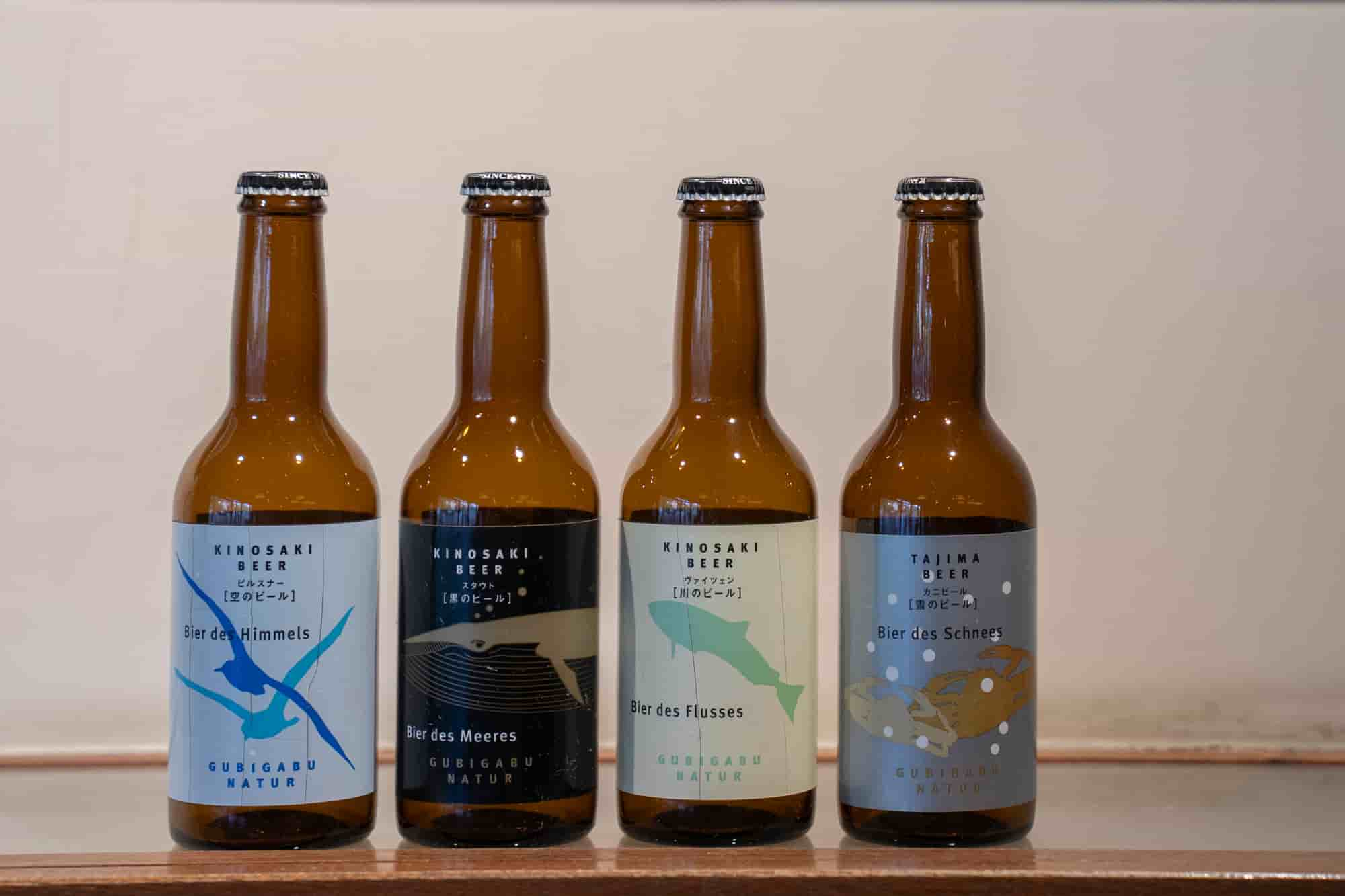 Bottled beers popular as souvenirs. From left: Pilsner, Stout, Weizen, and Crab Beer.
Bottled beers popular as souvenirs. From left: Pilsner, Stout, Weizen, and Crab Beer.
The freshly brewed beers, delivered directly from the brewery, include Pilsner, Weizen, and Stout, as well as the local specialty Crab Beer, inspired by the region’s famous snow crab. Each brew has its own distinct character, and the tasting set offers the perfect way to sample them all.
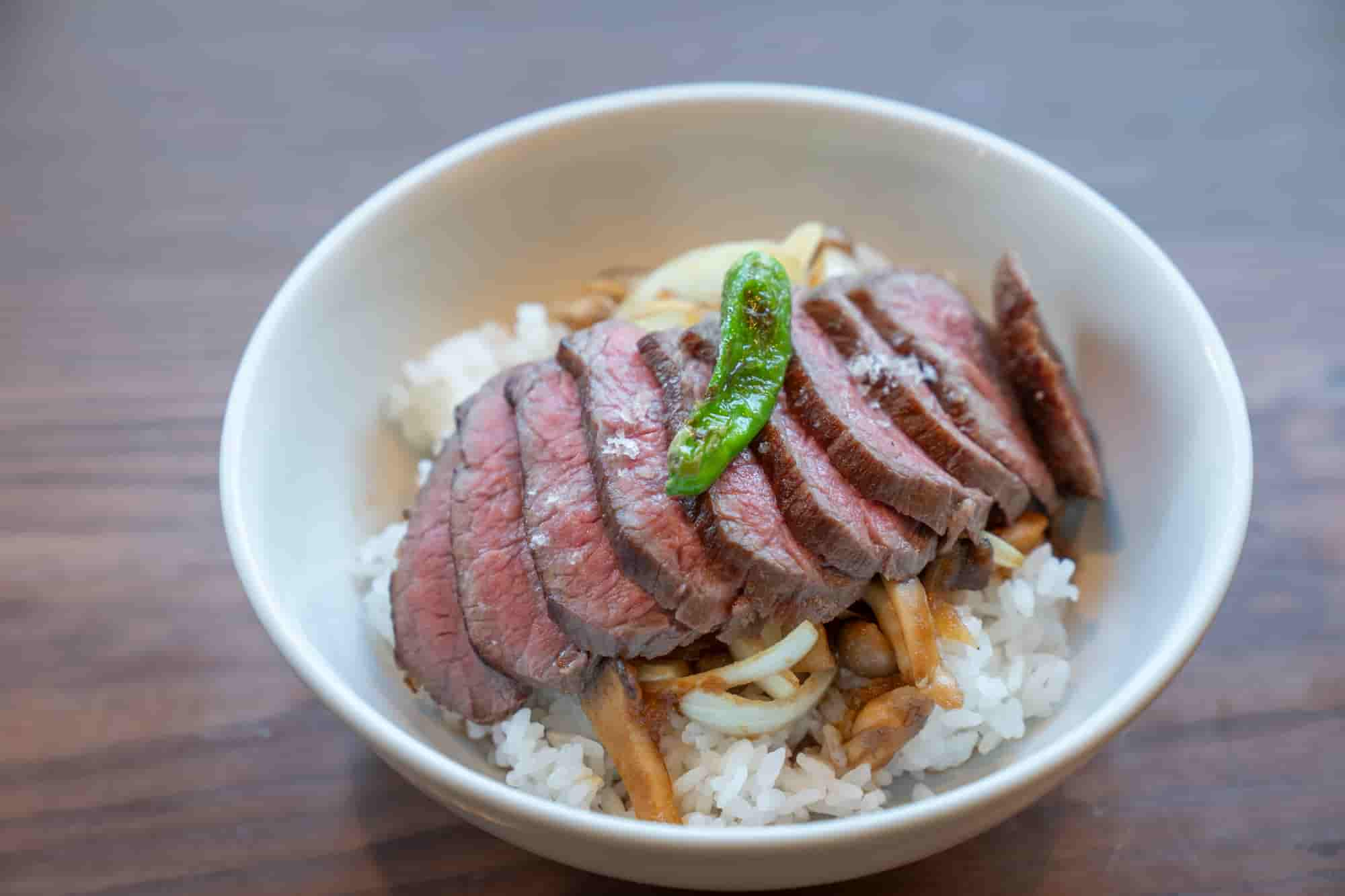 Tajima beef steak rice bowl, 3,000 yen.
Tajima beef steak rice bowl, 3,000 yen.
The restaurant’s signature Tajima beef steak rice bowl is a luxurious dish that lets you fully savor the rich umami of Hyogo’s premium wagyu. There are also eight varieties of stone-oven pizzas, including the Bismarck, topped with a hot spring egg—each one a perfect match for a cold beer.
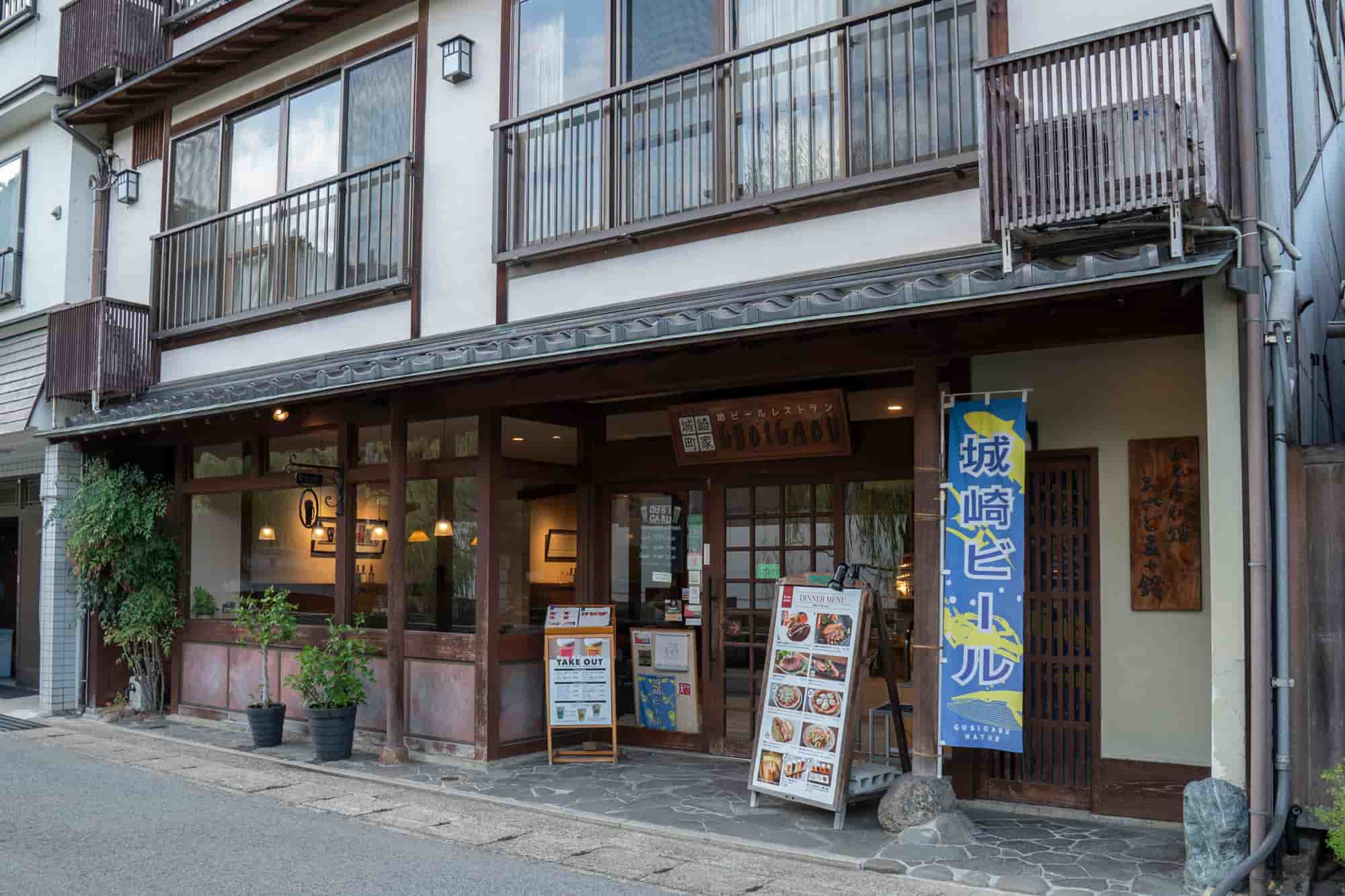 Located along the Otani River, Kinosaki Onsen’s main street.
Located along the Otani River, Kinosaki Onsen’s main street.
Open continuously from 11:30 a.m. to 10:00 p.m., GUBIGABU is ideal for lunch, dinner, or just a quick drink. With the Yanagiyu public bath right next door, it’s also the perfect place to unwind after a soak.
BOOK YOUR STAY IN KINOSAKI
Ride the Tango AO-MATSU Train to Amanohashidate
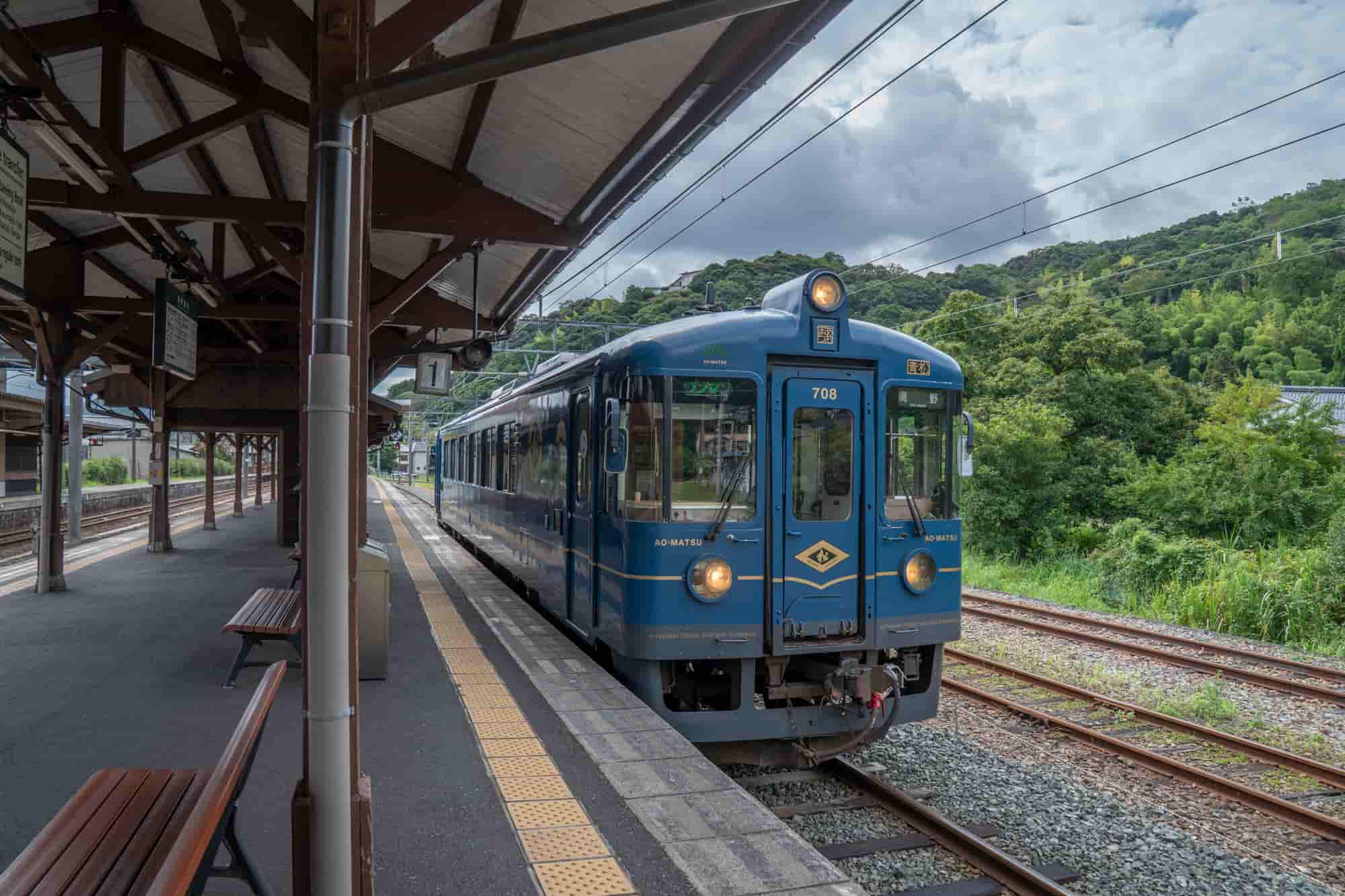 The Tango AO-MATSU Train, themed around pine trees—symbols of the Sea of Japan’s “white sands and green pines.”
The Tango AO-MATSU Train, themed around pine trees—symbols of the Sea of Japan’s “white sands and green pines.”
After leaving Kinosaki Onsen, head one stop to Toyooka Station. From here, take the Kyoto Tango Railway toward Amanohashidate in Kyoto. Between Toyooka or Amino and Nishi-Maizuru stations, the Tango AO-MATSU Train runs once daily in each direction. No advance reservation is required—simply board with a regular ticket and enjoy an easy, scenic ride.
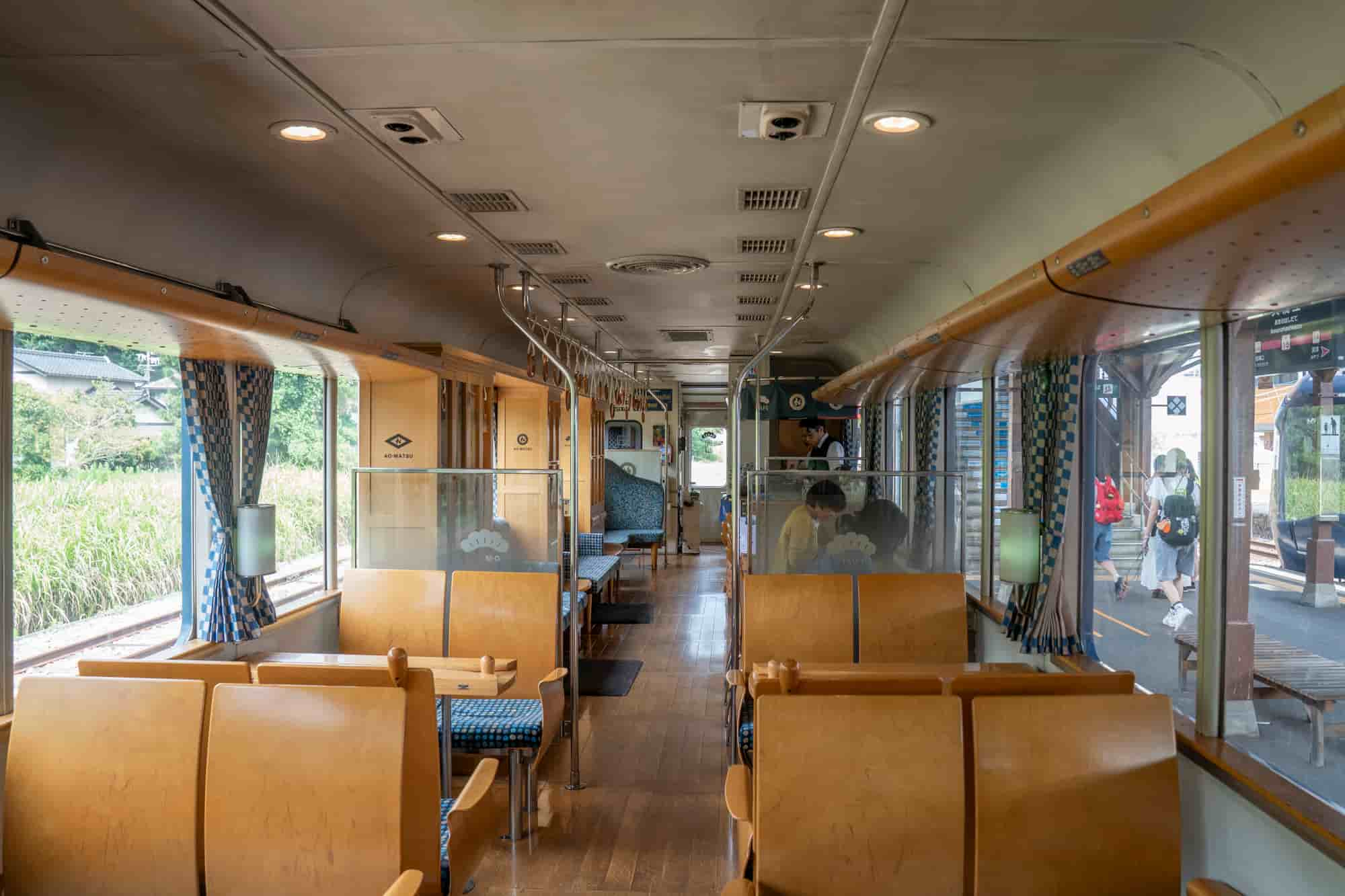 The interior features mainly four-person seats, along with counter and sofa seating.
The interior features mainly four-person seats, along with counter and sofa seating.
Designed by world-renowned industrial designer Eiji Mitooka, the train’s warm wooden interior takes matsu (pine) as its motif, evoking the iconic “white sands and green pines” of the Sea of Japan coast. Large picture windows frame the passing scenery, creating a relaxing atmosphere that captures the gentle rhythm of rail travel.
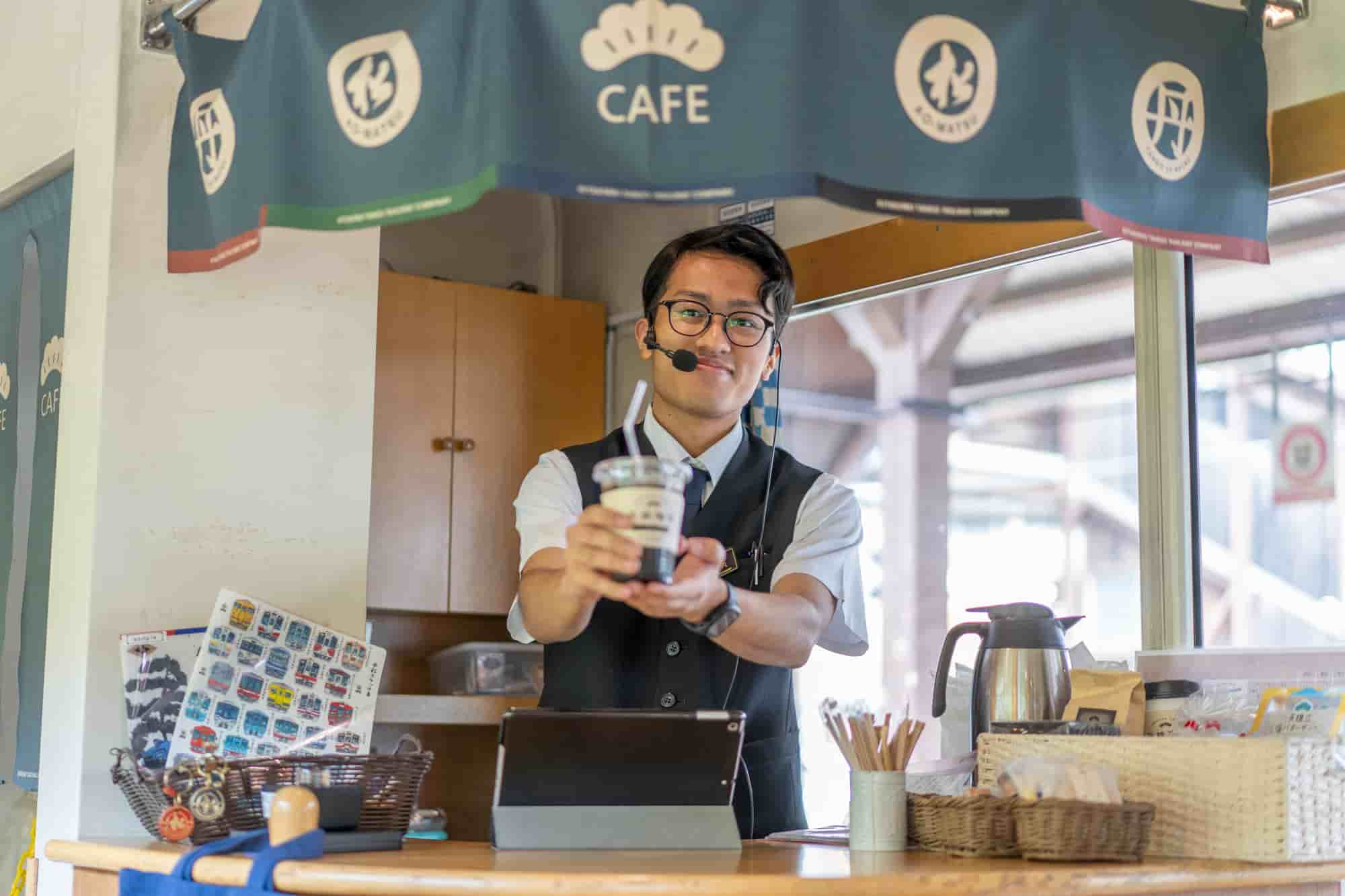 Onboard attendants offer snacks and drinks along certain sections.
Onboard attendants offer snacks and drinks along certain sections.
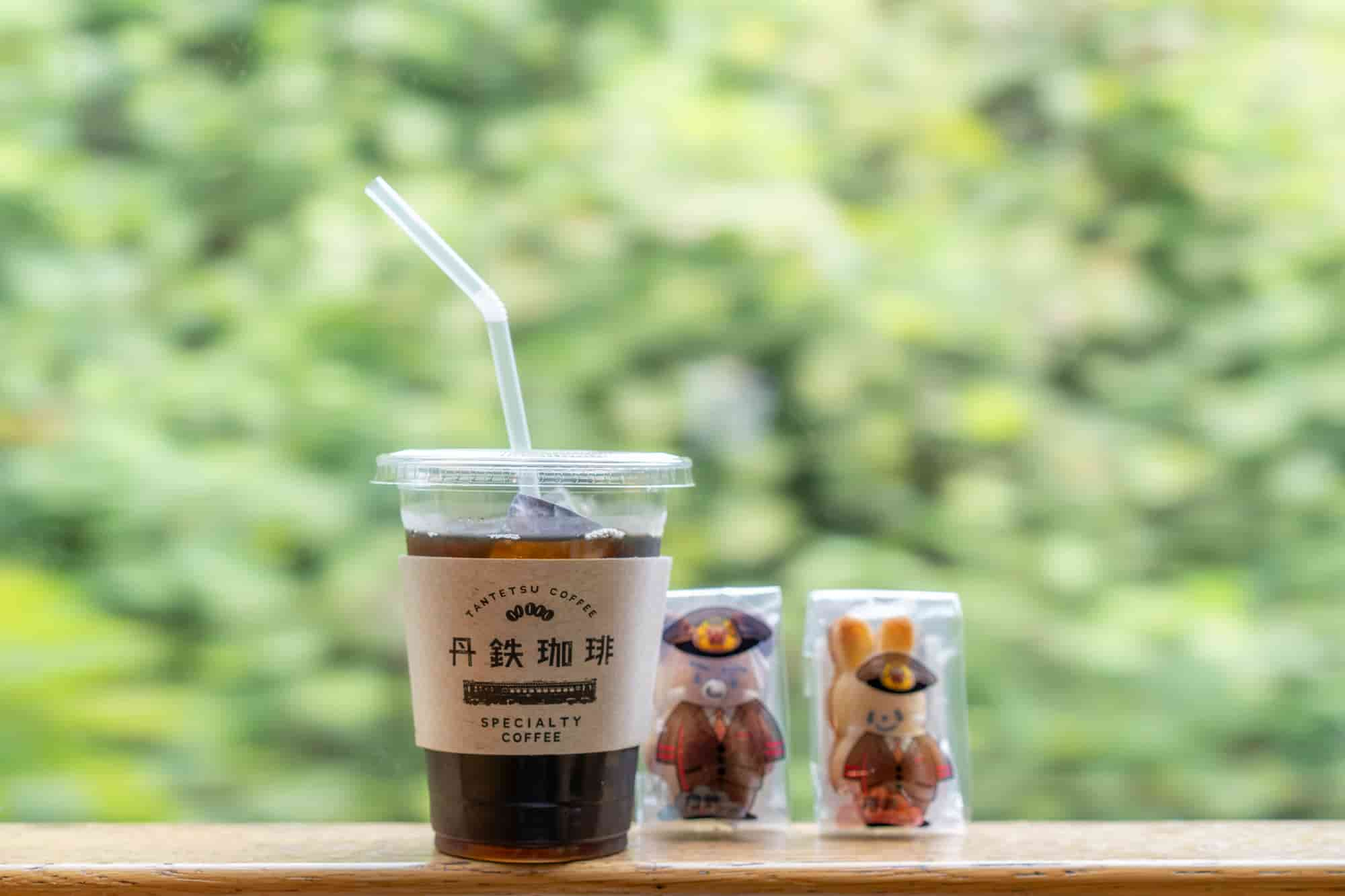 Iced coffee, 450 yen, and “Tantetsu Usakuma” cake, 200 yen each.
Iced coffee, 450 yen, and “Tantetsu Usakuma” cake, 200 yen each.
In sections where attendants are on board, passengers can purchase drinks and light snacks at the counter. Selections include Tantetsu Coffee, a house blend roasted by Kinosaki Coffee, along with local craft beer and Japanese confections from along the railway line.
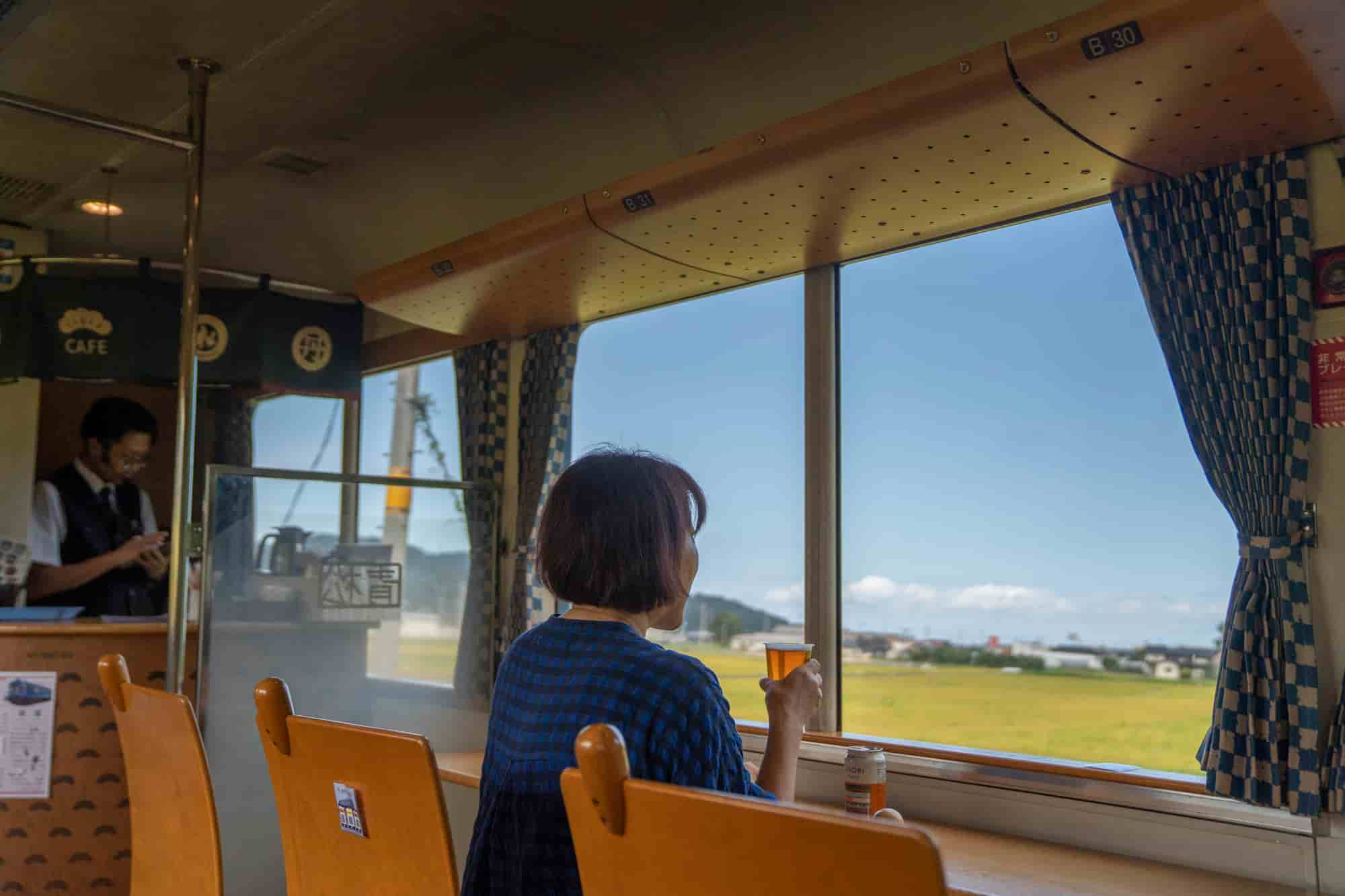 Counter seats offer sweeping views through the train’s wide windows.
Counter seats offer sweeping views through the train’s wide windows.
The counter seats facing the windows are the best in the house, offering uninterrupted views of tranquil rural scenery that soothe the soul. As the train nears Amanohashidate, the view opens to the coast, where stretches of pine-fringed white sand—one of Japan’s most beautiful landscapes—unfold before your eyes.
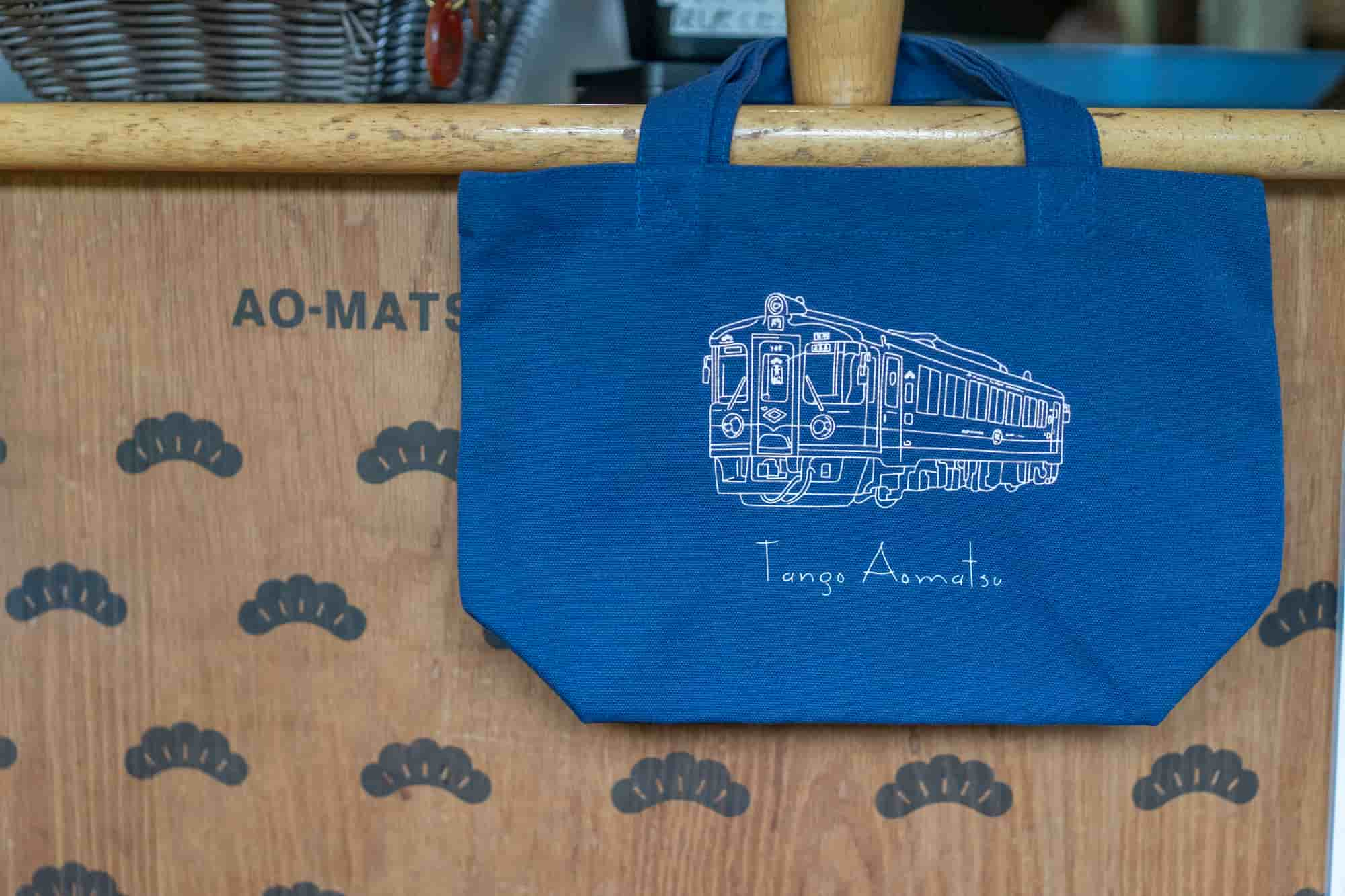 Tango AO-MATSU tote bag, 1,000 yen.
Tango AO-MATSU tote bag, 1,000 yen.
Original Tantetsu goods are also available on board. From clear files and hand towels designed by Eiji Mitooka to travel-ready tote bags, these items make charming keepsakes of the journey.
Visit a Sake Brewery Led by a British Master Brewer
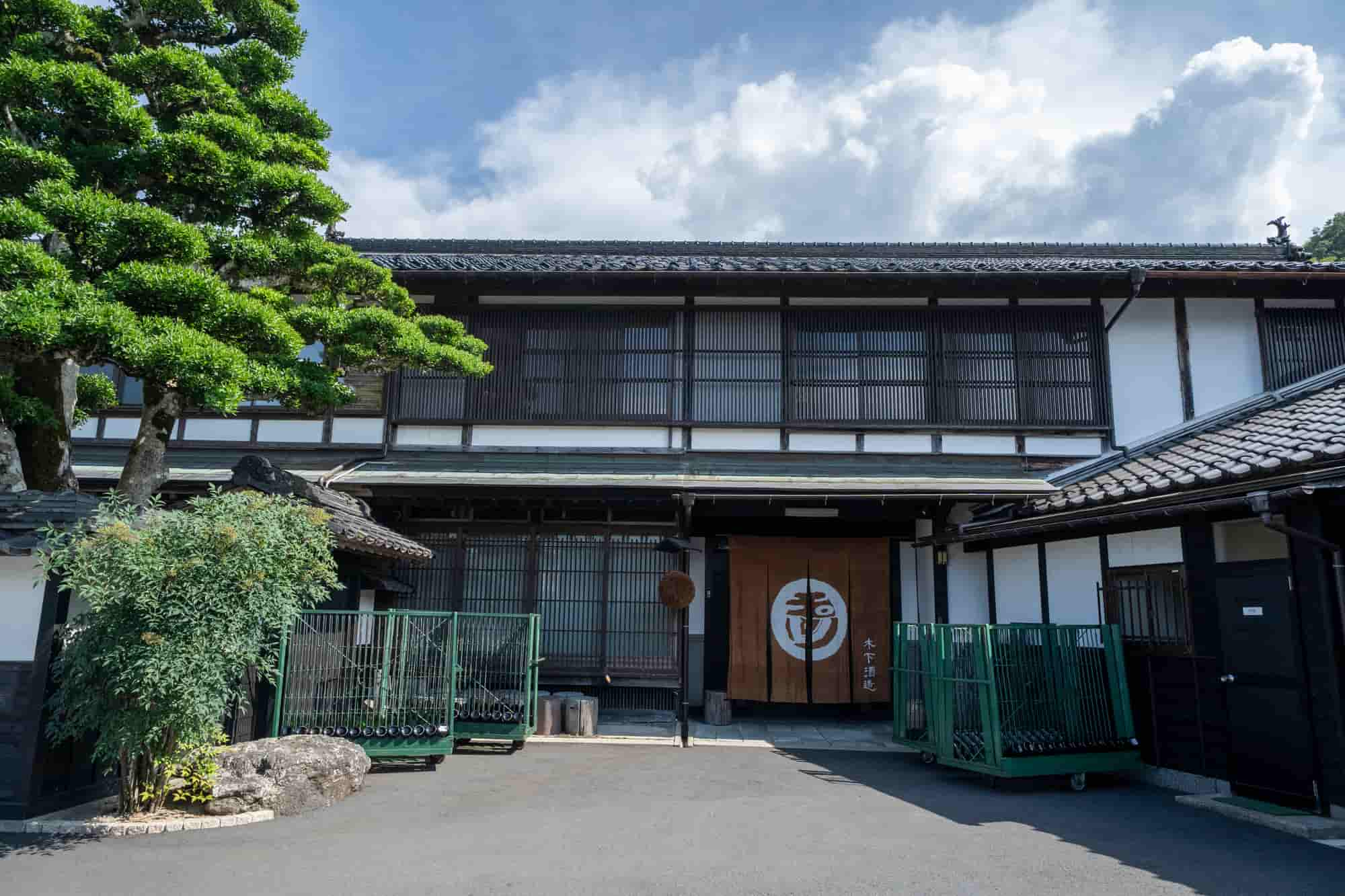 Founded in 1842, the brewery still retains buildings dating back to the Edo period.
Founded in 1842, the brewery still retains buildings dating back to the Edo period.
About 20 minutes from Toyooka Station on the Kyoto Tango Railway, the journey crosses from Hyogo into Kyoto. Disembark at Kabutoyama Station, and after a three-minute walk you’ll arrive at Kinoshita Brewing Company in Kumihama, northern Kyoto—renowned for its British master brewer, Philip Harper.
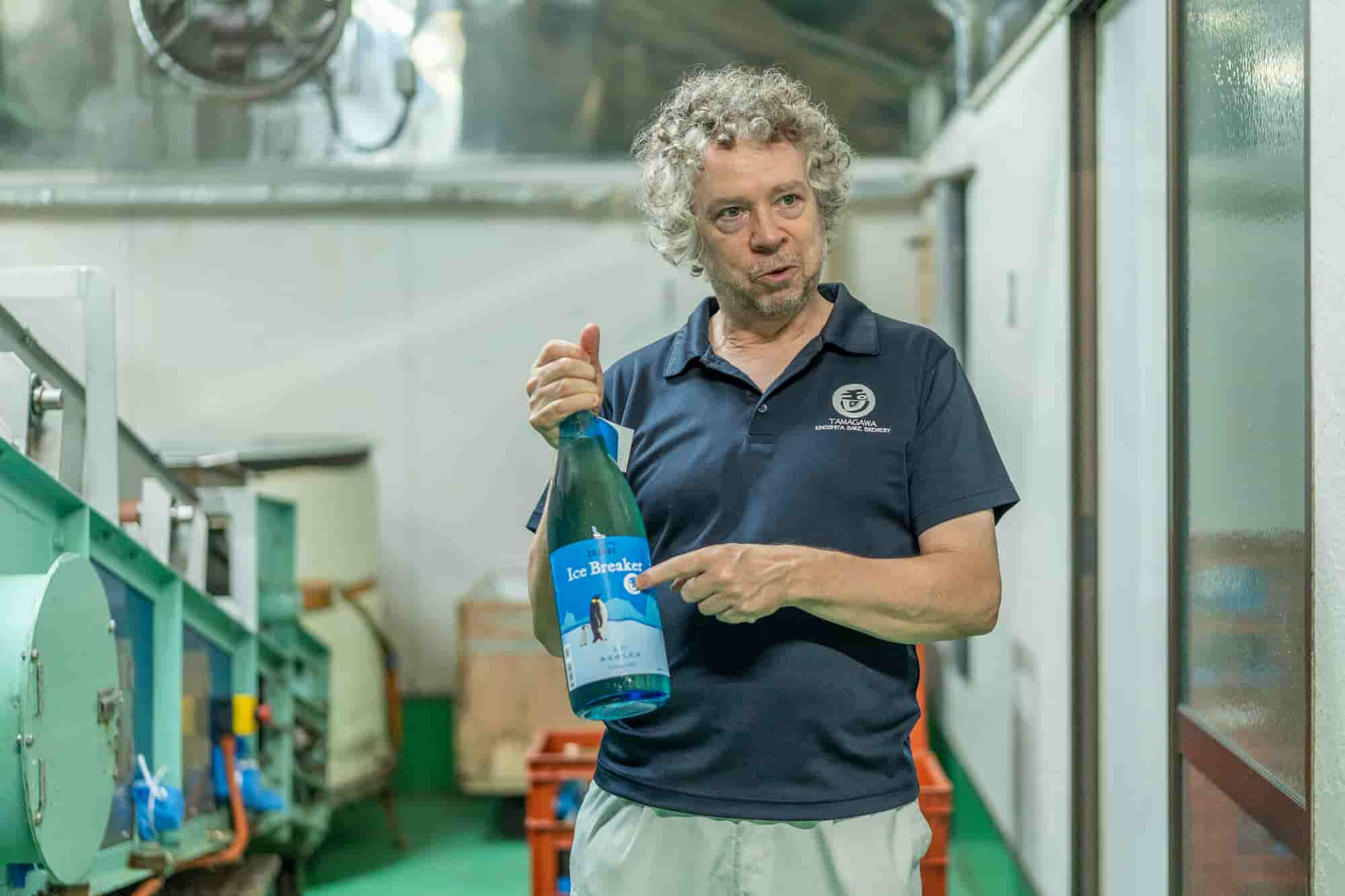 Philip Harper, the first non-Japanese person to become a toji (master brewer).
Philip Harper, the first non-Japanese person to become a toji (master brewer).
A graduate of the University of Oxford, Harper first came to Japan in 1988 and was captivated by the depth of sake brewing. After ten years of training at Umenoyado Brewery in Nara, he obtained his Nanbu Toji certification, later working at Daimon Brewery in Osaka before joining Kinoshita Brewery in 2007. In his very first year as toji, he won the Gold Prize at the National New Sake Appraisal, instantly drawing nationwide attention to his skill and pioneering approach, and bringing the brewery’s Tamagawa label to prominence across Japan.
Today, while most breweries rely on cultured yeast and added lactic acid, Tamagawa’s Kimoto and Yamahai sakes are made solely from water, rice, and rice koji—nothing else.
“This ‘natural brewing’ method harnesses the microorganisms living in our earthen walls and wooden beams to create a one-of-a-kind sake,” explains Harper. “Tamagawa sakes are strong and resilient; they can be stored and matured at room temperature—unusual for sake. Staying true to our concept of ‘sake that evolves with time,’ many of our products are deliberately aged before release to highlight the beauty of change.”
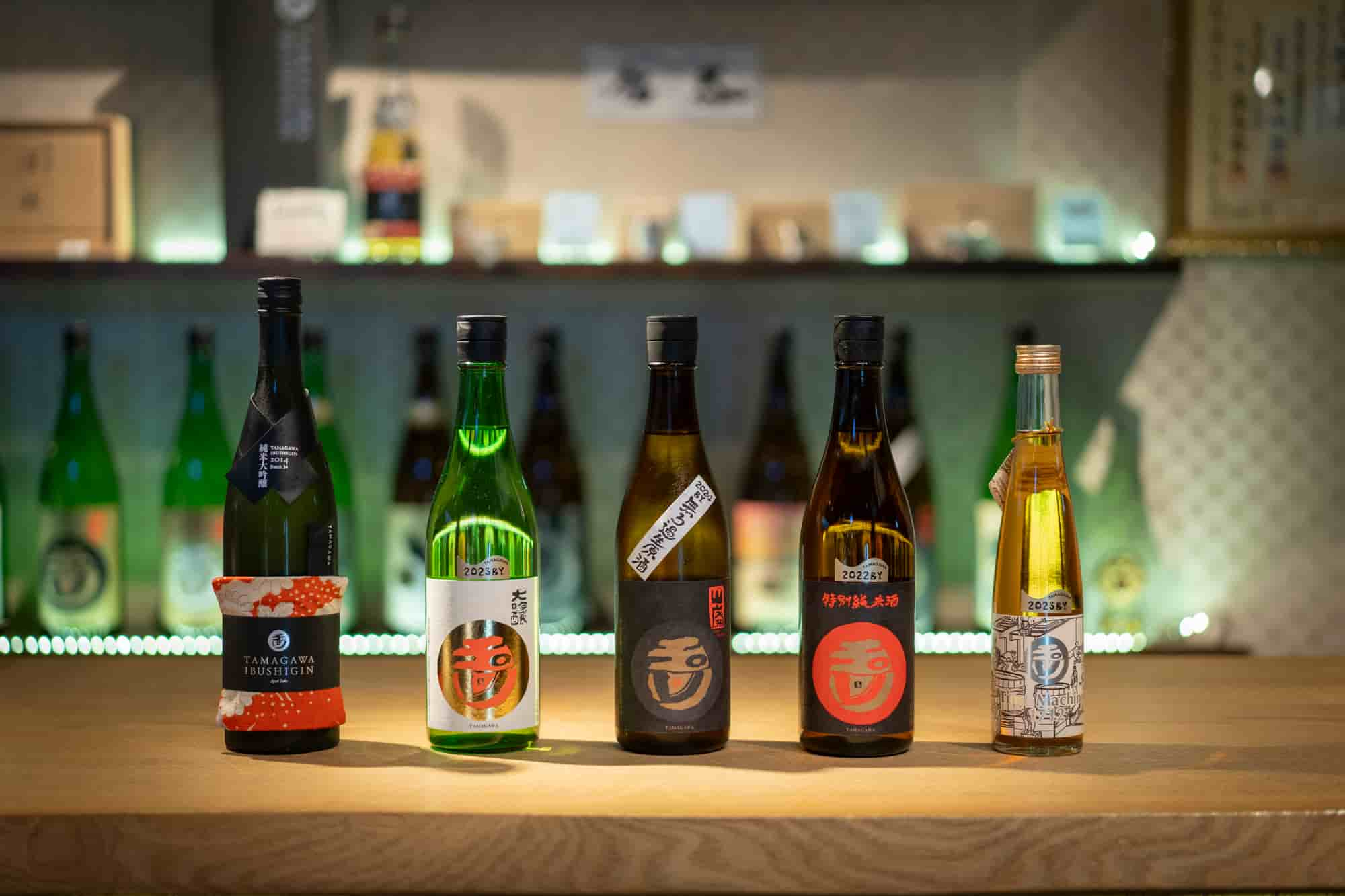 The logo and label, designed by Japanese painter Katsusuke Sakane, are works of art in themselves.
The logo and label, designed by Japanese painter Katsusuke Sakane, are works of art in themselves.
Asked to select sakes he’d most like to share with the world, Harper chose several emblematic bottles: the robust Tamagawa Natural Kimoto Junmai Unfiltered Nama Genshu; the historical Time Machine 1712, brewed in the style of the Edo period; the long-beloved Tamagawa Tokubetsu Junmai; the fragrant Tamagawa Daiginjō; and the IBUSHIGIN Series, long-aged sakes wrapped in labels of antique Japanese fabric—each bottle unique and steeped in its own story.
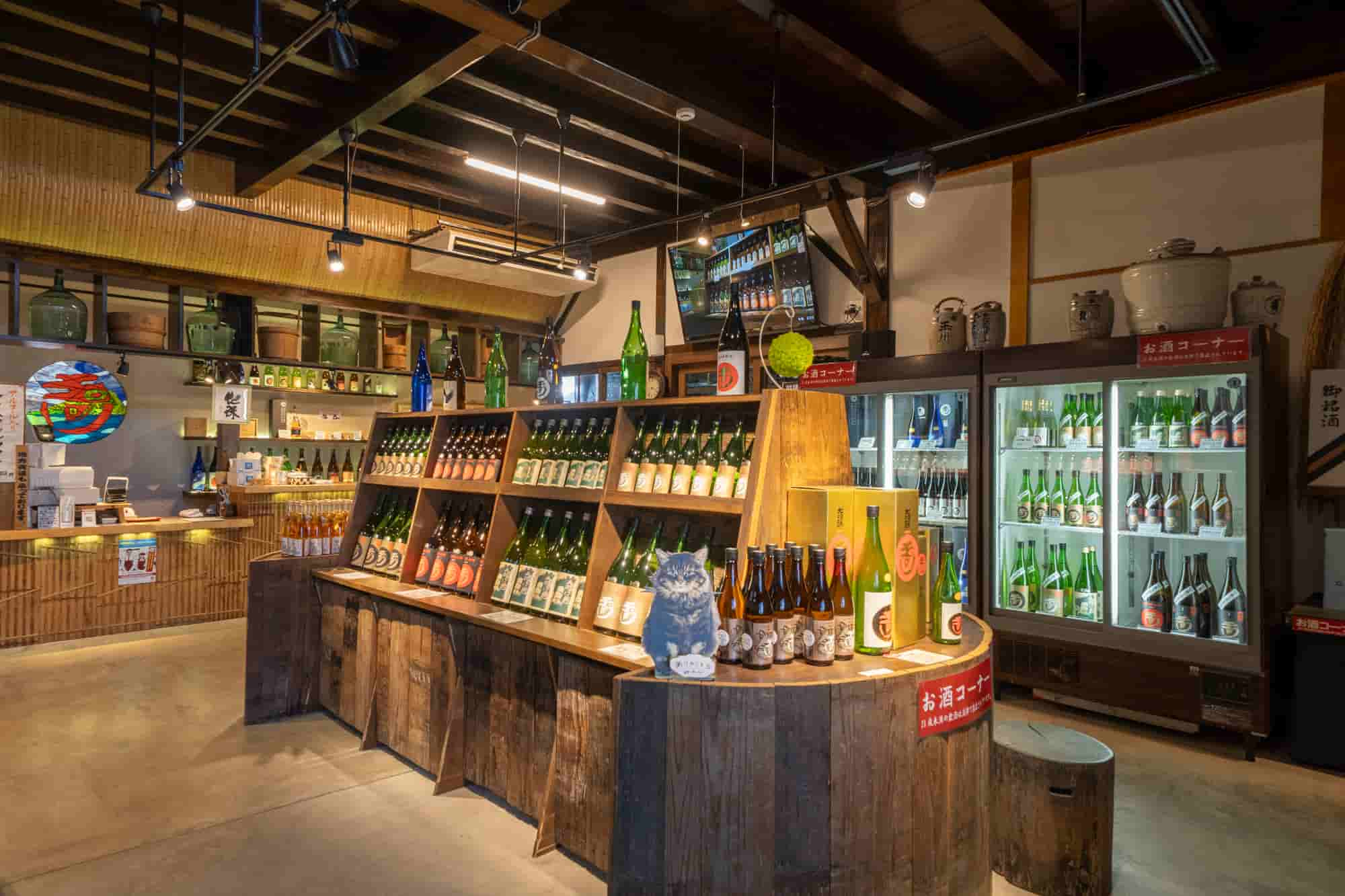 The brewery’s direct-sales shop, open 9:00 a.m to 5 p.m.
The brewery’s direct-sales shop, open 9:00 a.m to 5 p.m.
At the on-site shop, visitors can sample various sakes and purchase local specialties such as soft-serve ice cream made with Tamagawa sake. Limited-edition seasonal brews and ultra-rare bottles available only at the brewery make each visit a once-in-a-lifetime encounter.
Ride an e-Bike through Amanohashidate and Ine’s Boathouses
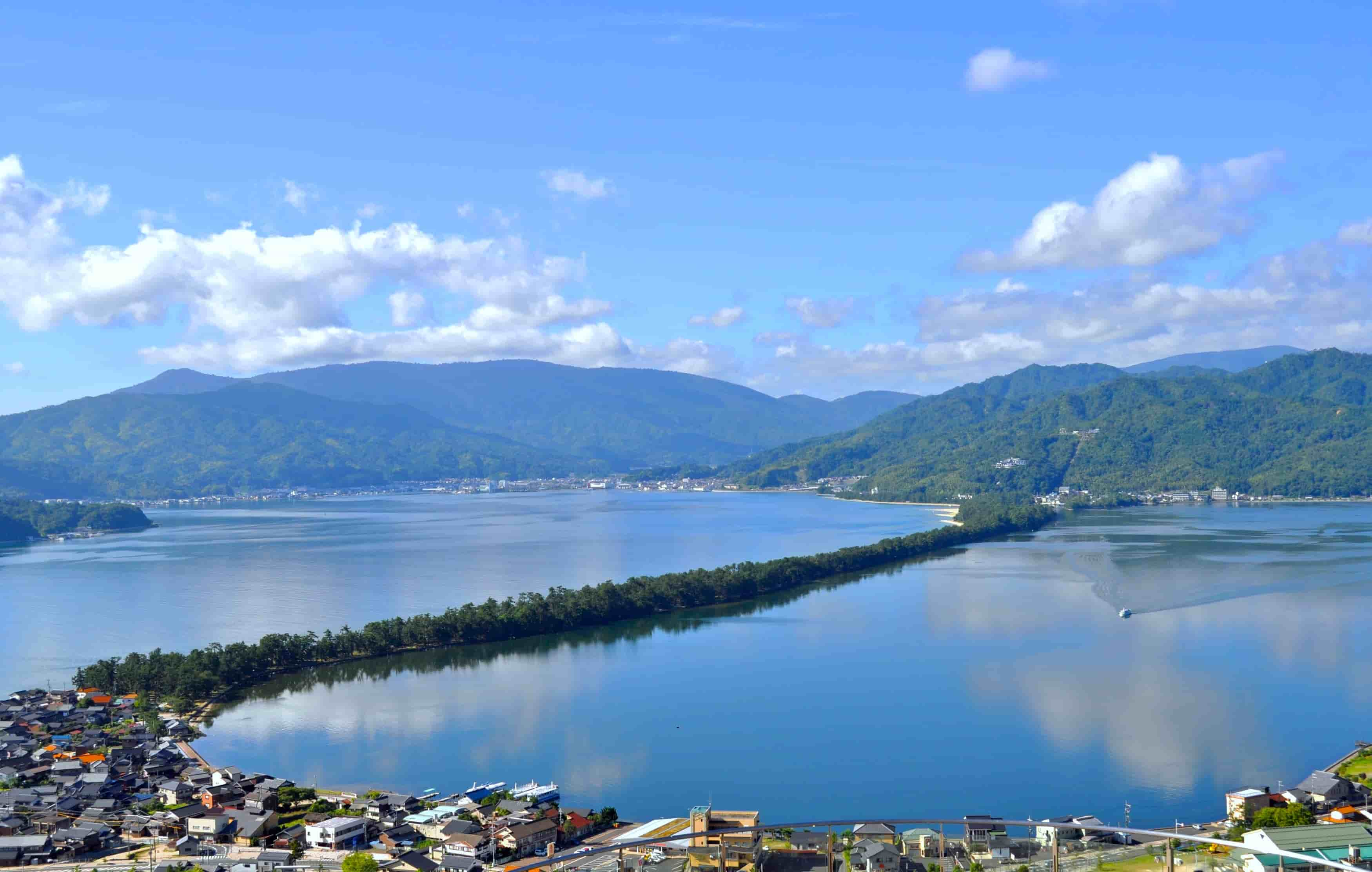 Amanohashidate viewed from Kasamatsu Park.
Amanohashidate viewed from Kasamatsu Park.
About an hour from Kabutoyama Station lies Amanohashidate, known as the “Gateway to Kyoto by the Sea.” Among inbound visitors, exploring the area by e-bike has become especially popular.
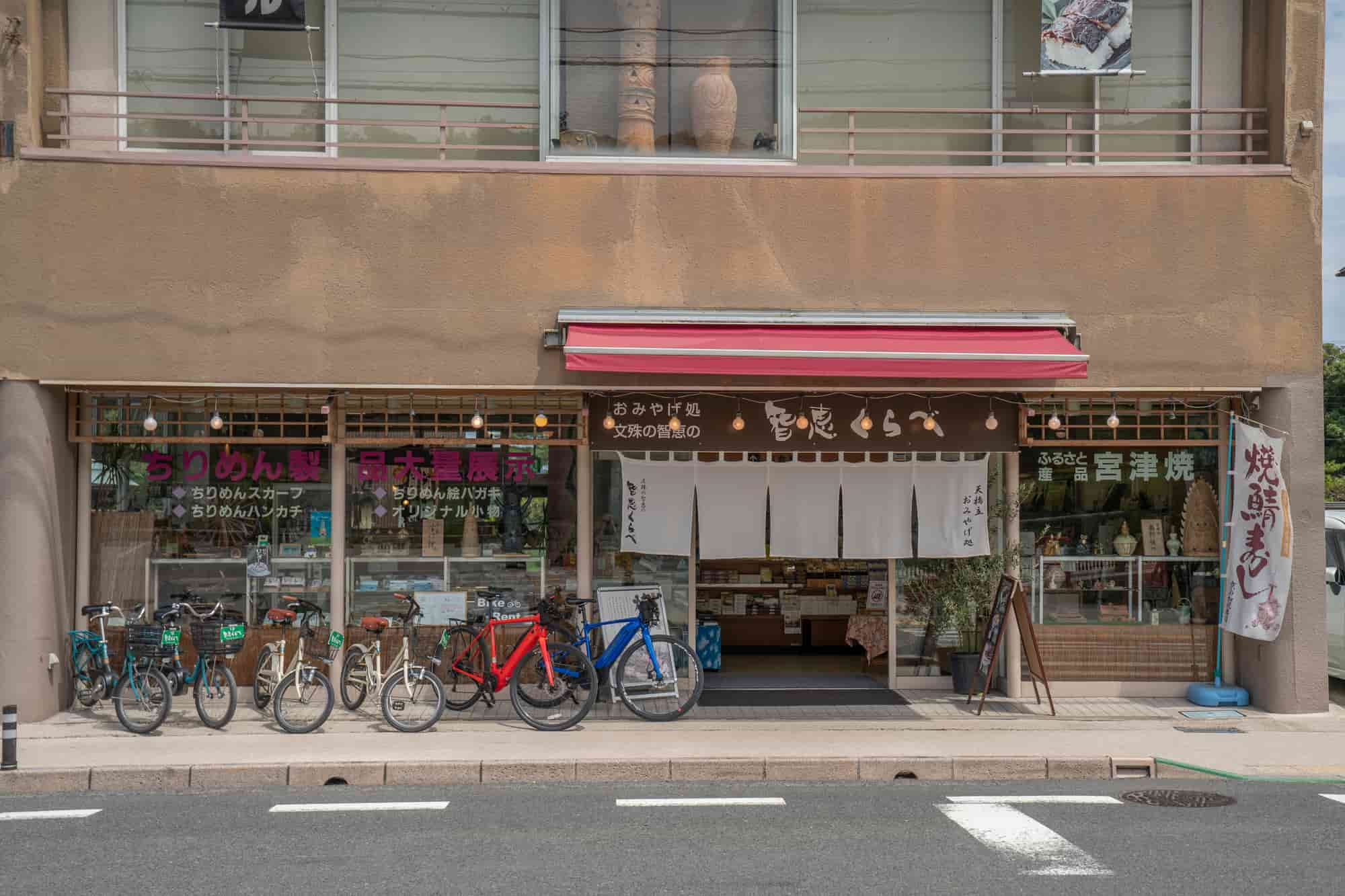 e-Bike rentals start at 2,500 yen per day. Multi-day rentals and one-way drop-offs are also available.
e-Bike rentals start at 2,500 yen per day. Multi-day rentals and one-way drop-offs are also available.
Kyoto E-Bikes offers rentals and guided tours throughout the “Kyoto by the Sea” region, with several pick-up points—one of which is Chiekurabe, a souvenir shop right in front of Amanohashidate Station. The lineup ranges from sporty models to city bikes, allowing riders to choose according to their route and distance, and giving travelers newfound freedom to explore.
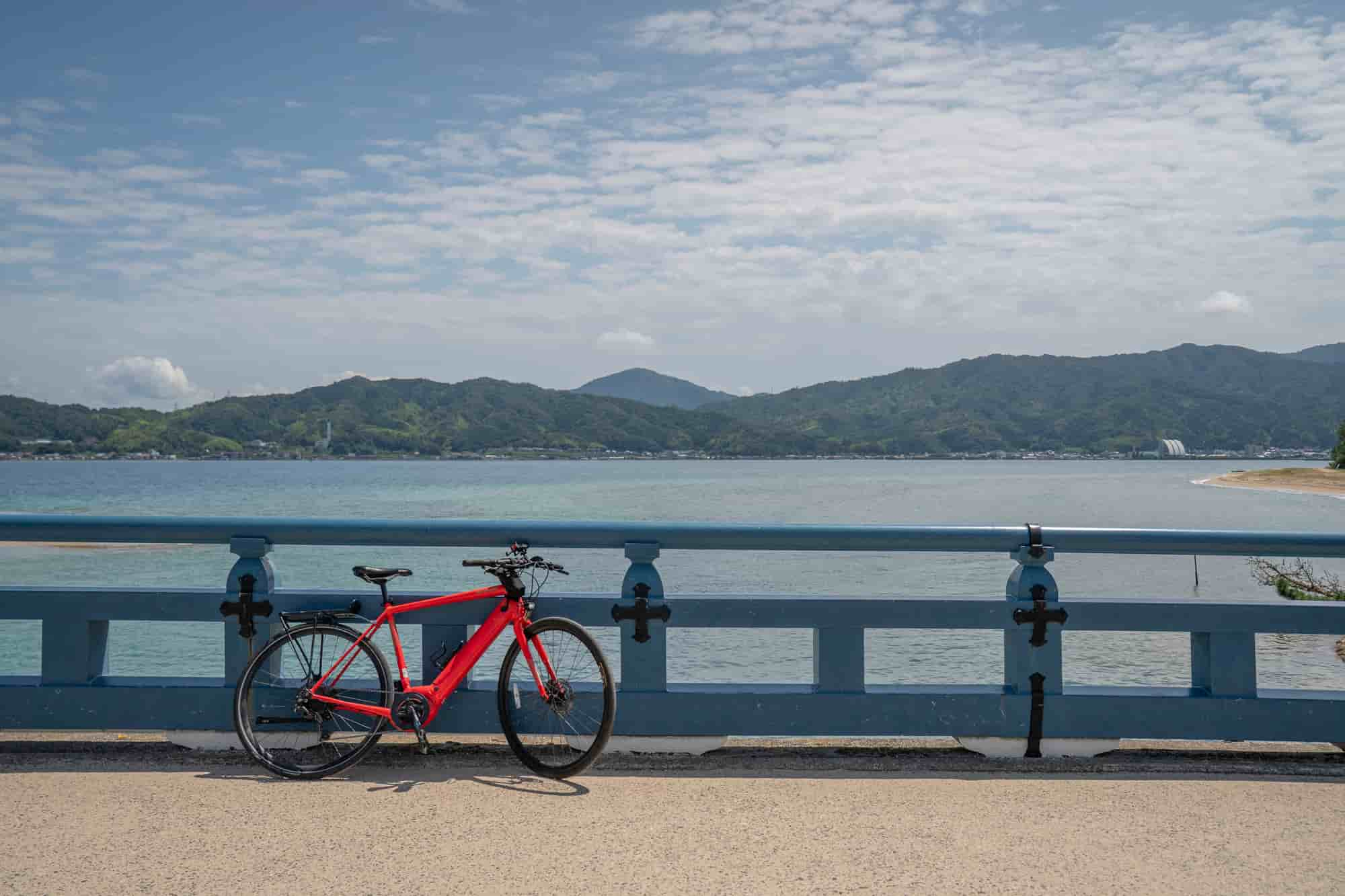 The blue Daitenkyo Bridge, connecting the pine-lined sandbar of Amanohashidate.
The blue Daitenkyo Bridge, connecting the pine-lined sandbar of Amanohashidate.
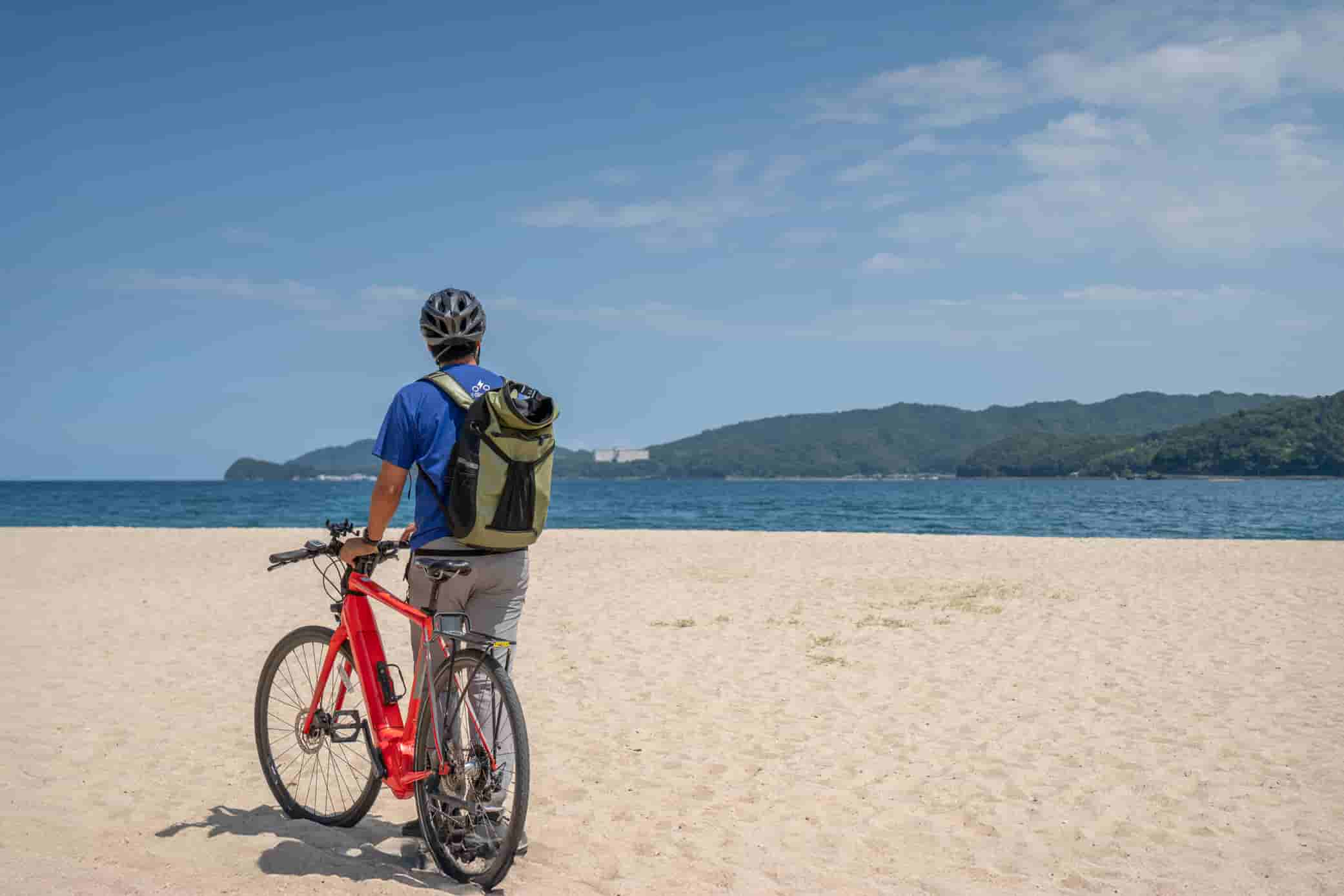 The white sands of Amanohashidate Beach—many cyclists stop here for a swim along the way.
The white sands of Amanohashidate Beach—many cyclists stop here for a swim along the way.
For a leisurely ride, the Amanohashidate Loop Course, roughly 14 km in total, is ideal.
The flat, coastal cycling path offers gentle scenery and easy riding, even for beginners and families with children.
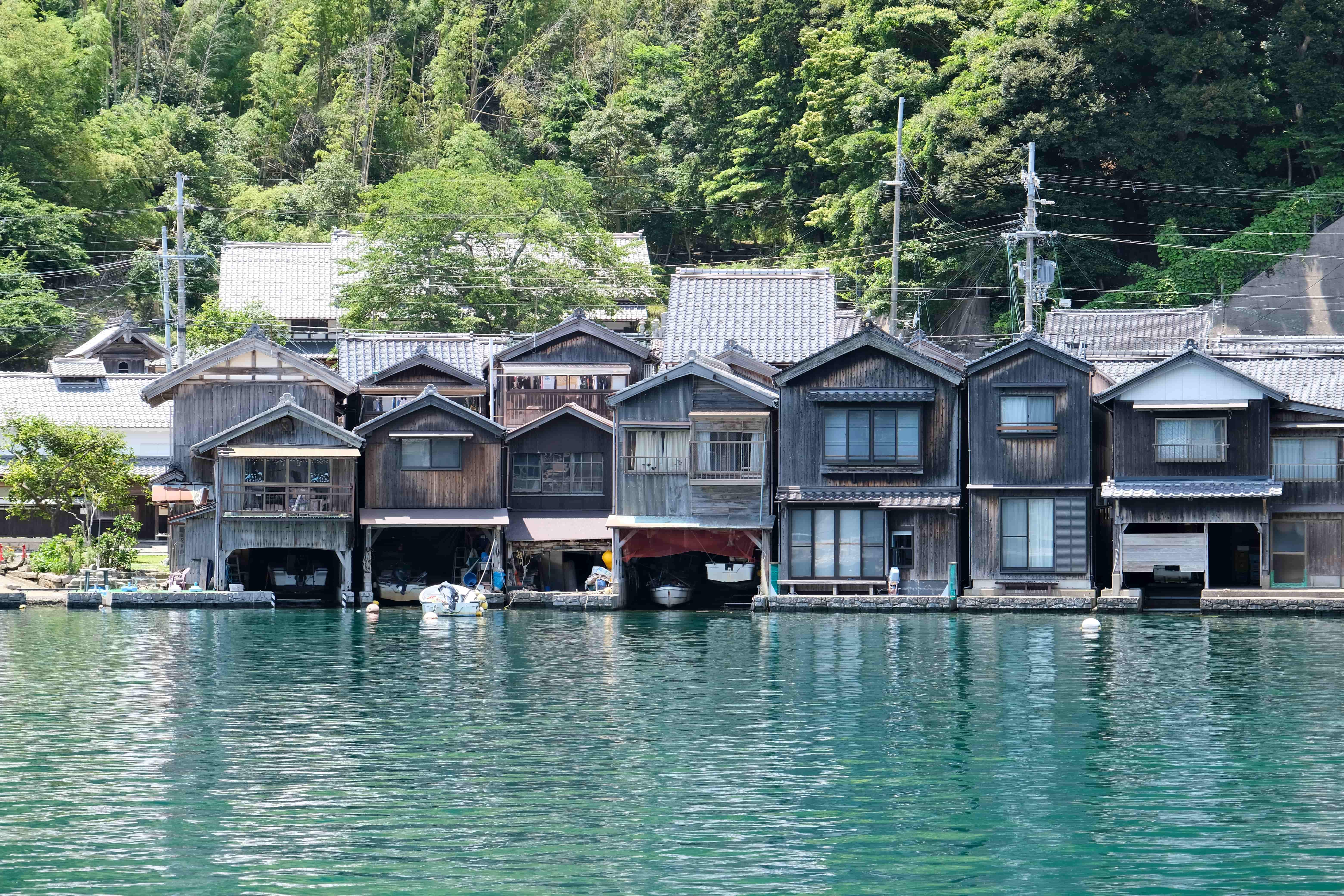 Funaya boathouses lining the shores of Ine Bay.
Funaya boathouses lining the shores of Ine Bay.
Those with more stamina can continue from Amanohashidate toward the famous funaya boathouses of Ine. The 18-km route along National Route 178 traces the coastline, unfolding one breathtaking view after another. After about an hour’s ride, you’ll reach Ine, where roughly 230 boathouses stand shoulder to shoulder around the 5-km curve of the bay—a truly unique sight. With prior reservation, one-way drop-off is possible, offering flexibility to fit any travel plan.
The rail journey connecting Hyogo and Kyoto turns travel itself into an experience.
Soothed by hot springs, uplifted by fine sake, and exhilarated by e-bike rides through coastal scenery, every encounter and smile along the way leaves a vivid imprint on the traveler’s heart.
(Featured Spots)
Kinosaki Onsen
Kinosaki Gelato Café Chaya
https://www.instagram.com/kinosakigelatocafe_chaya/
GUBIGABU Craft Beer Restaurant
Tango AO-MATSU Train
https://travel.willer.co.jp/train/tantetsu/aomatsu/
Kinoshita Brewing
https://www.sake-tamagawa.com/en/
Kyoto E-Bikes





